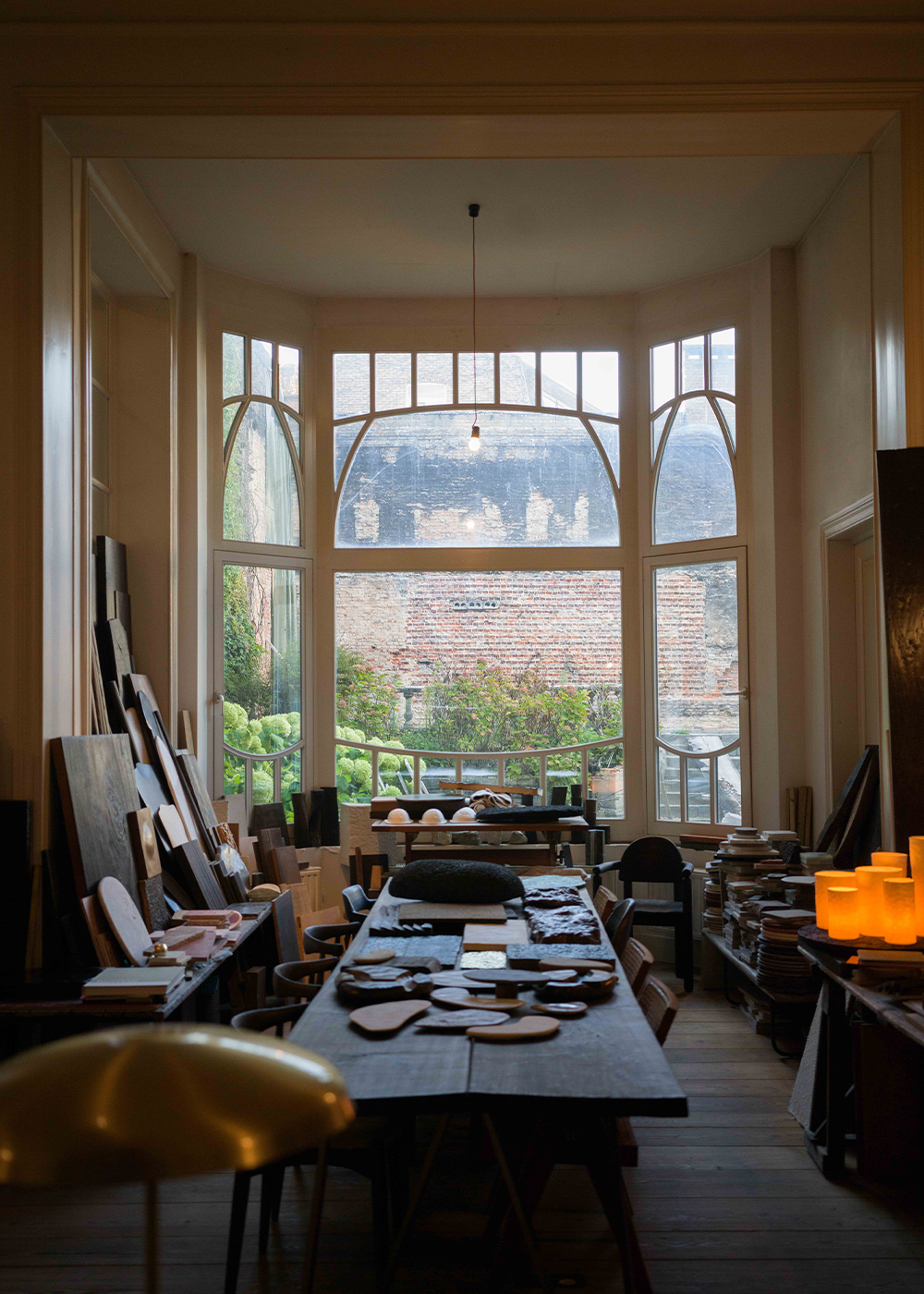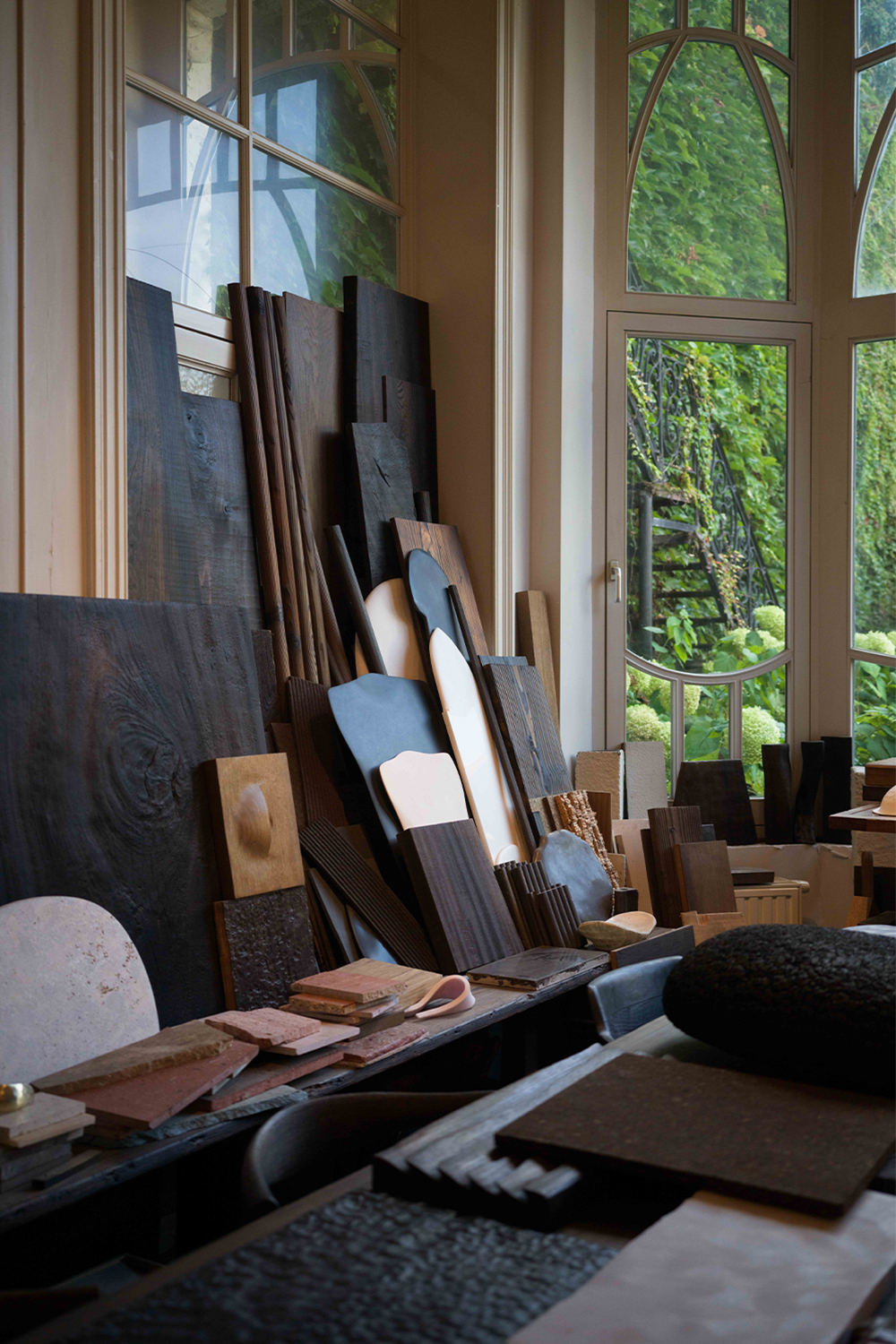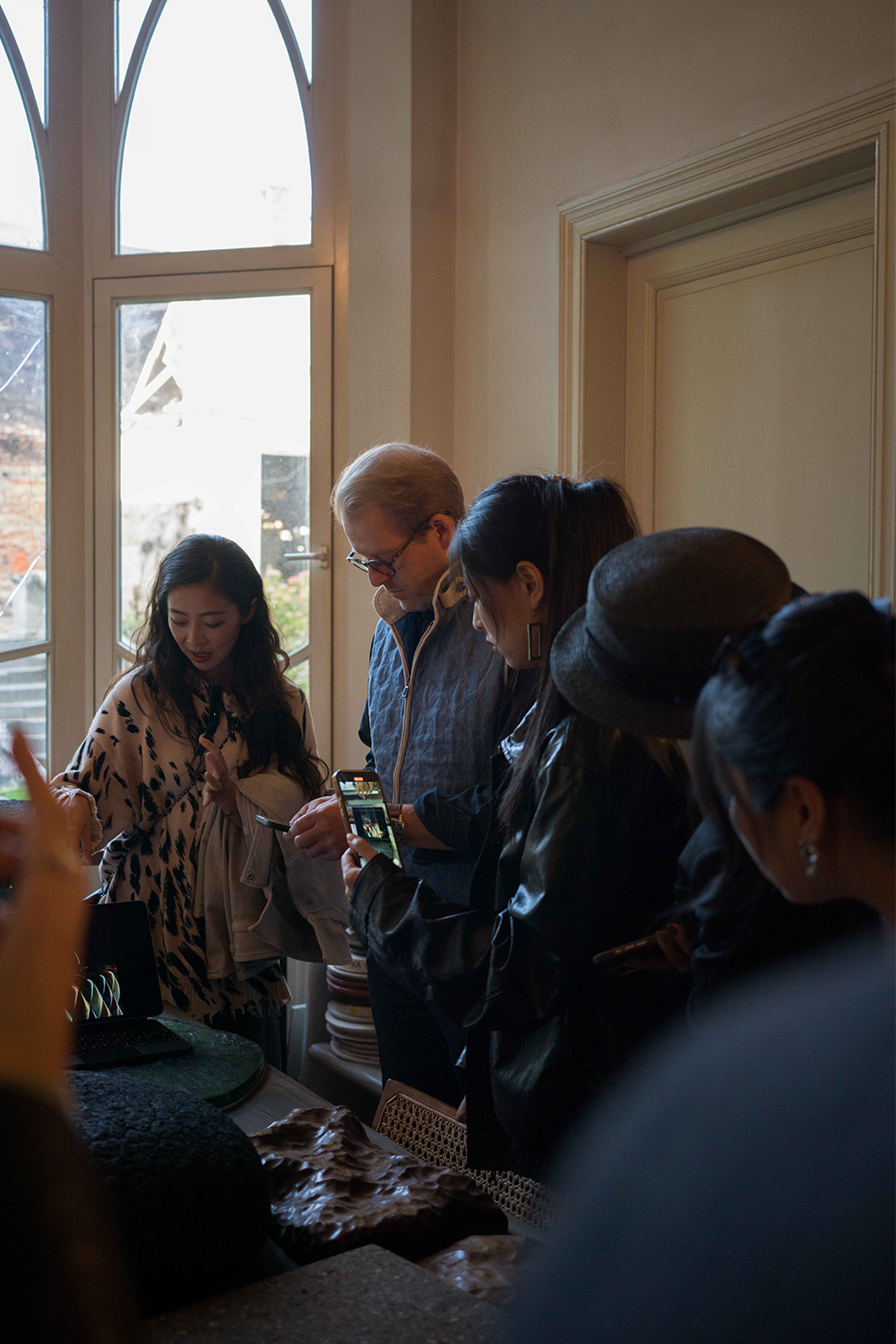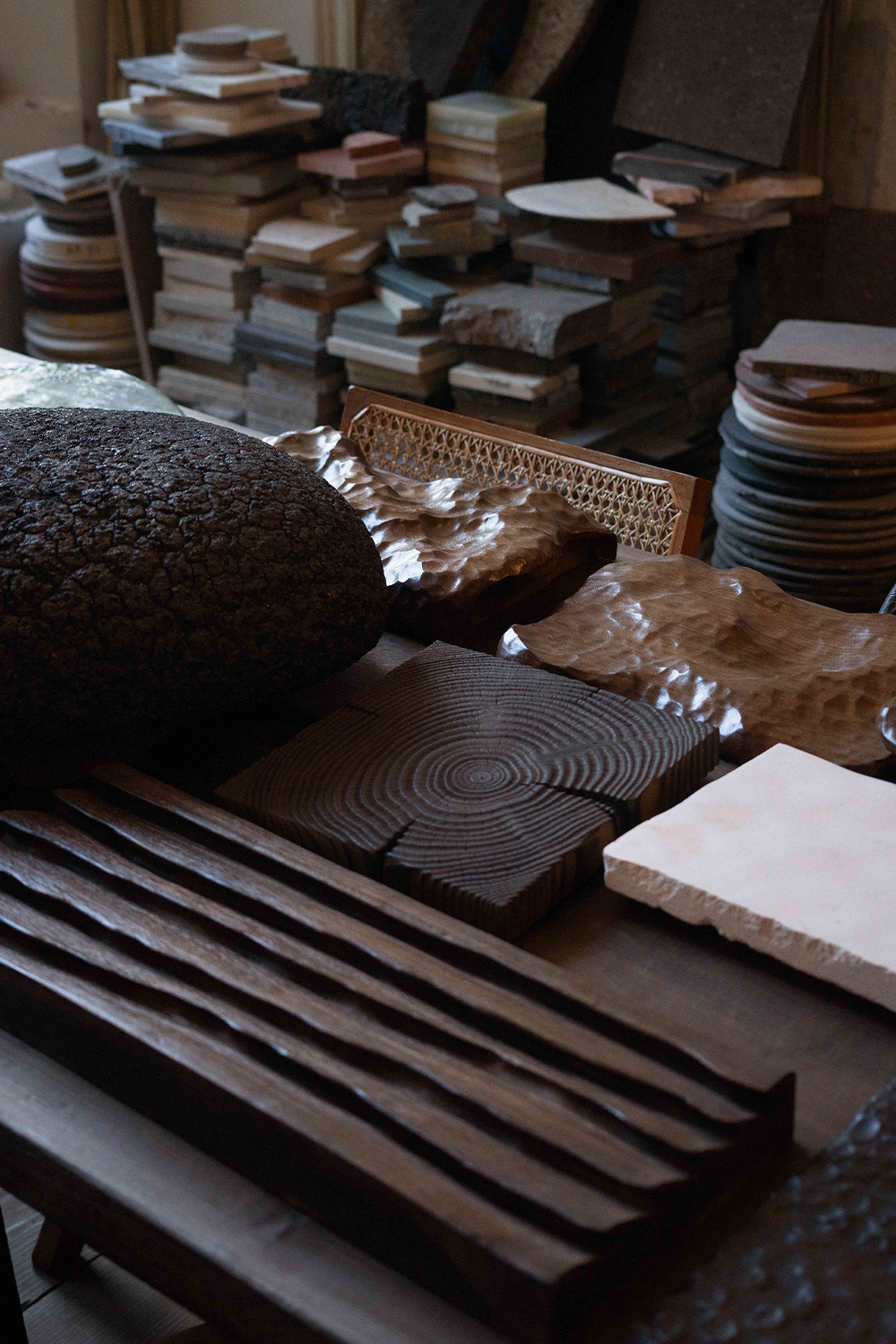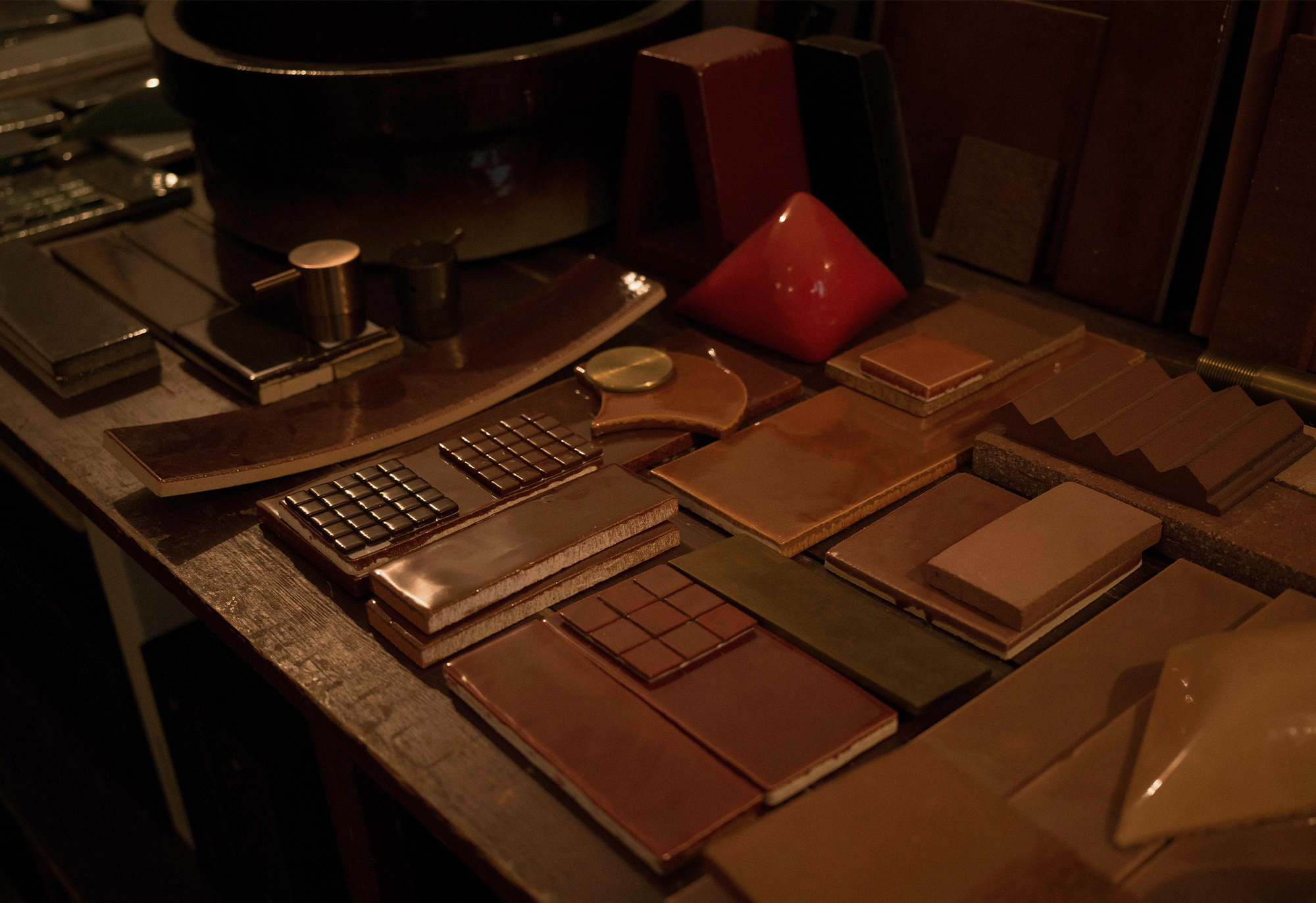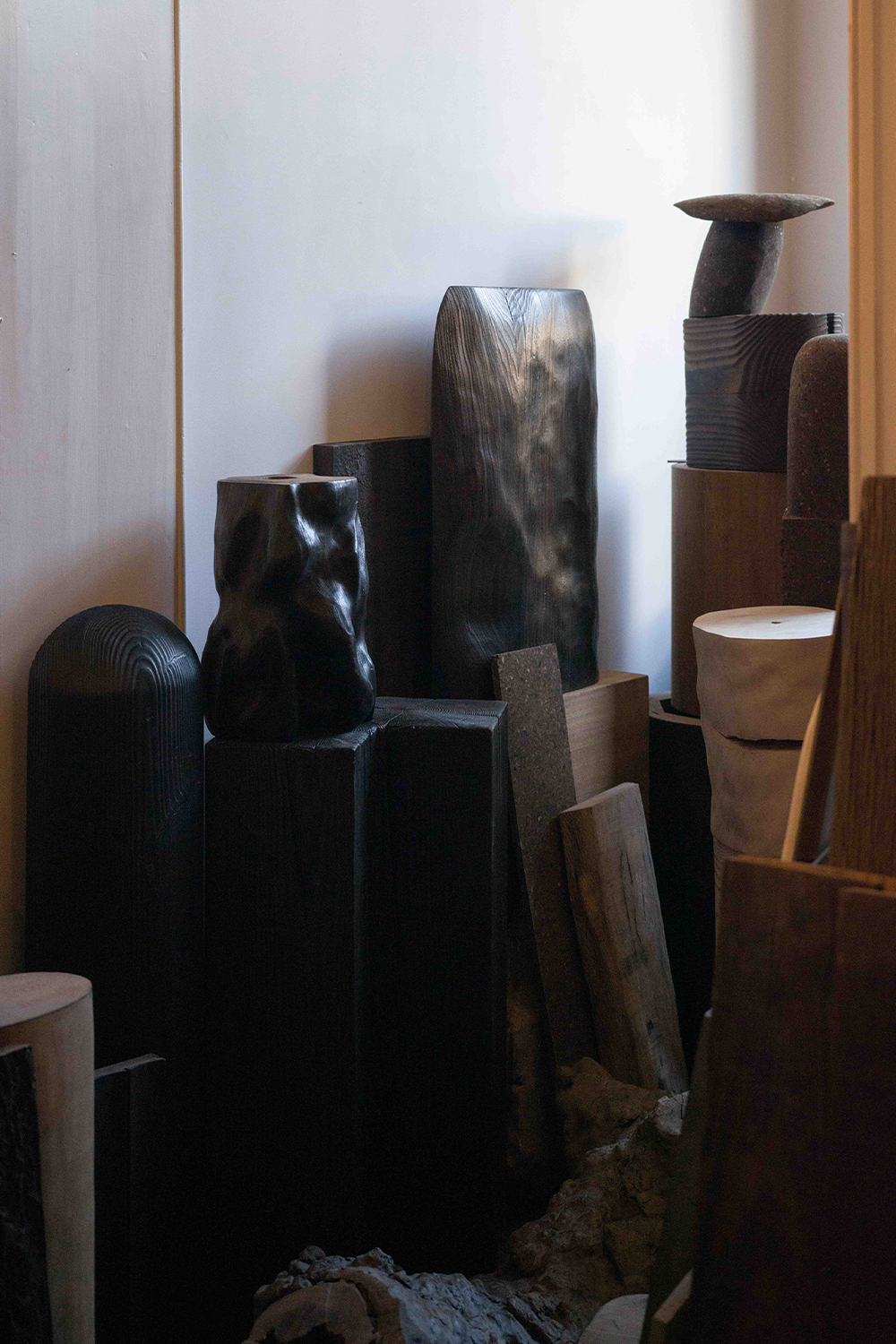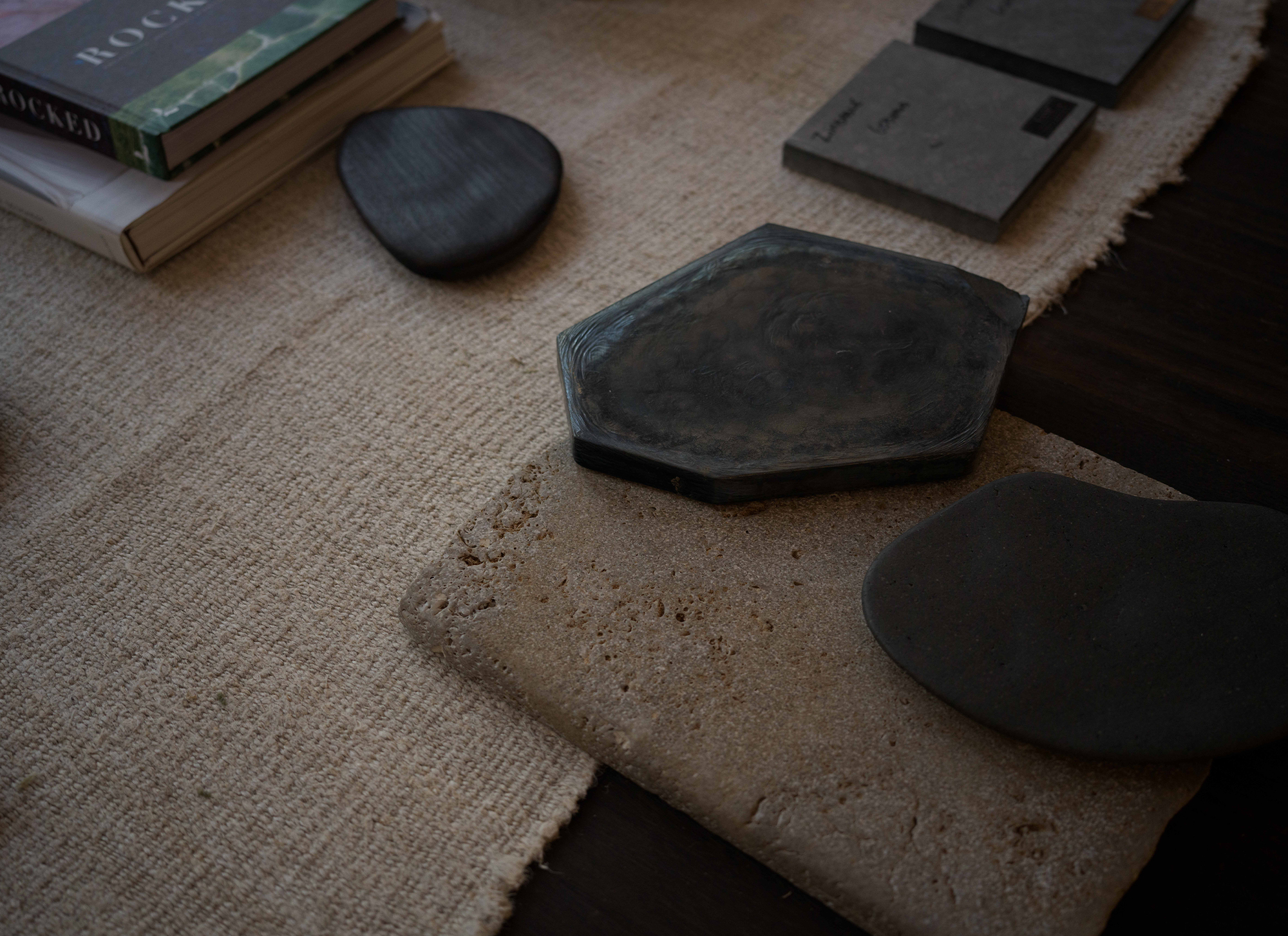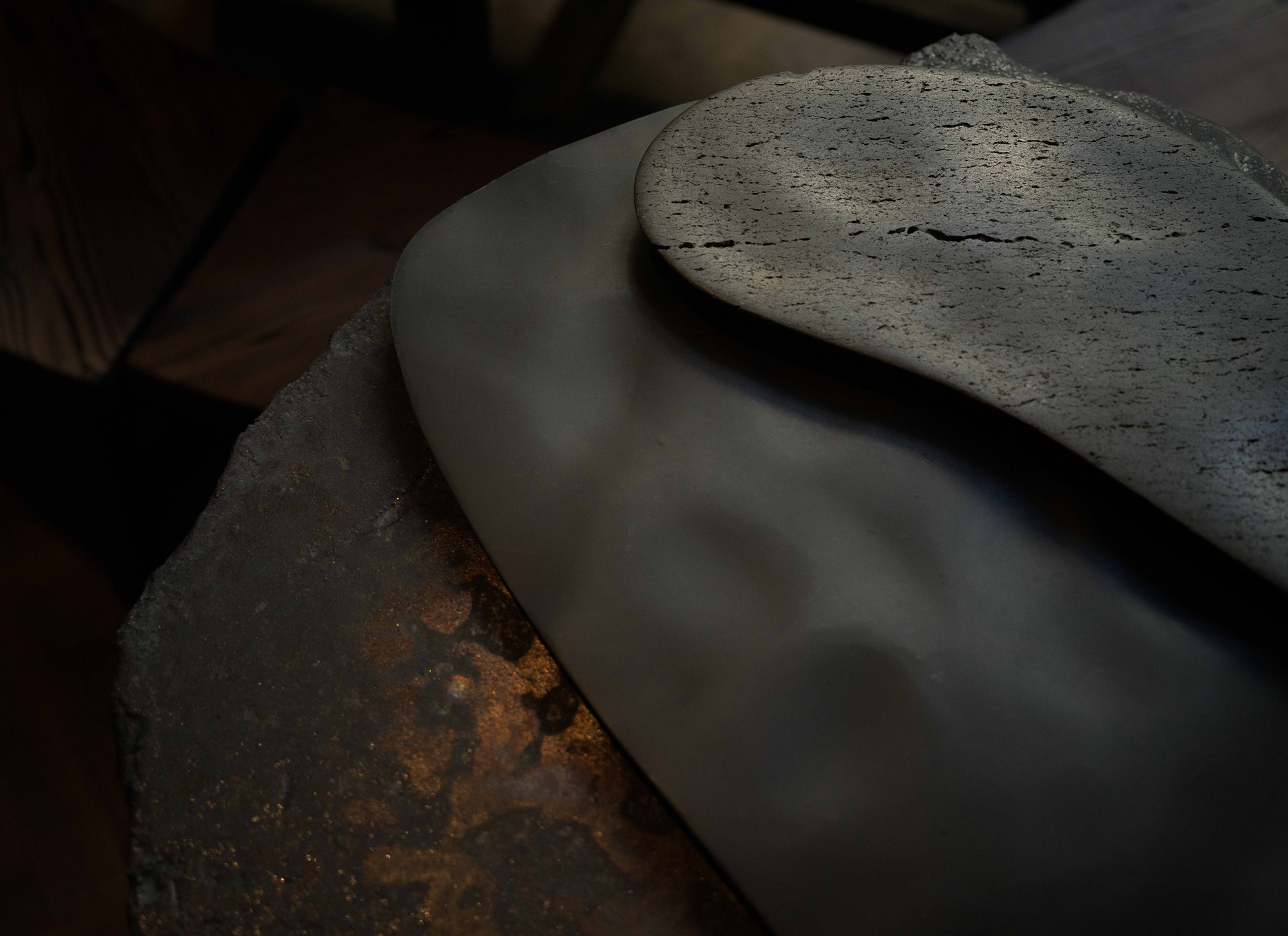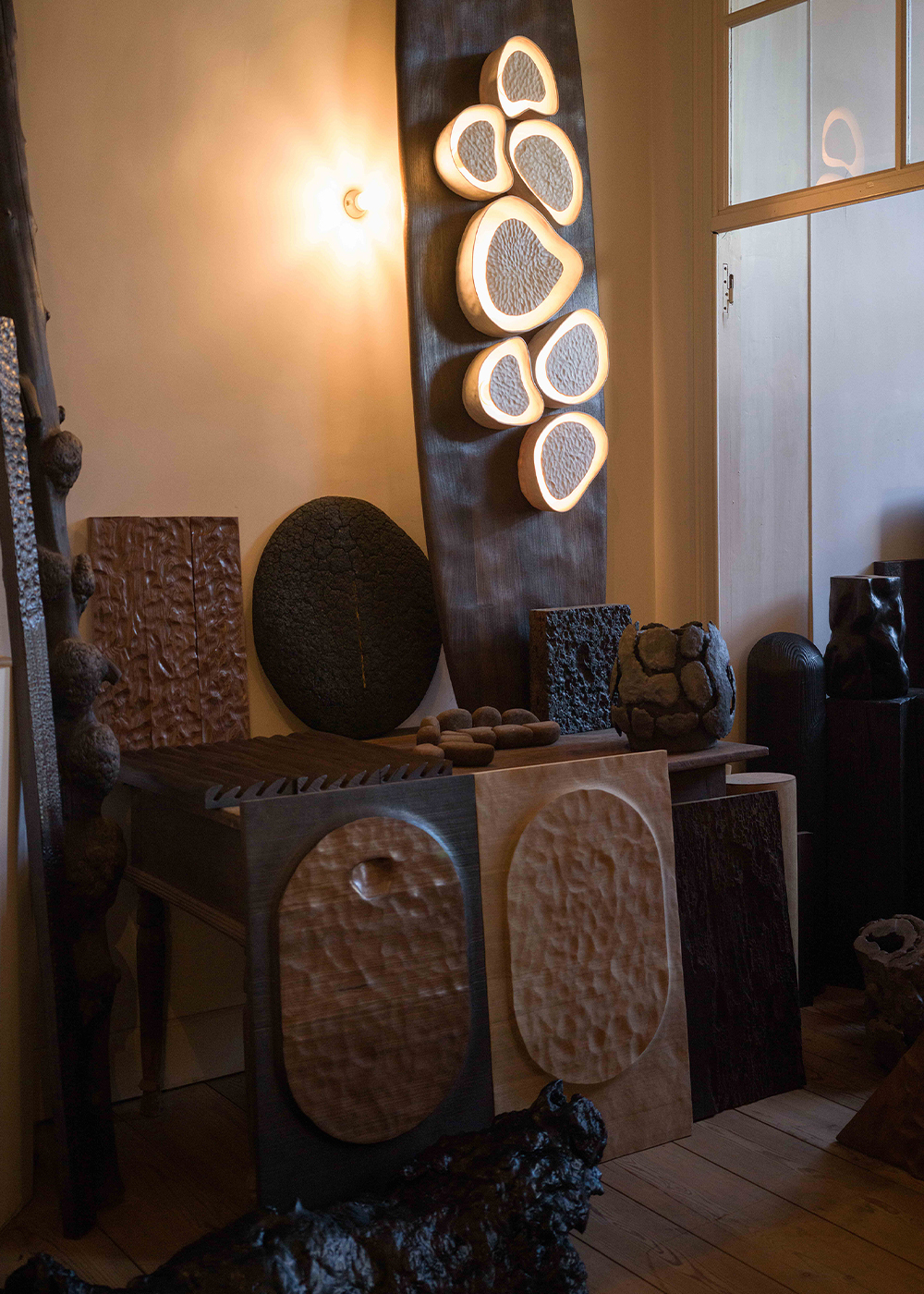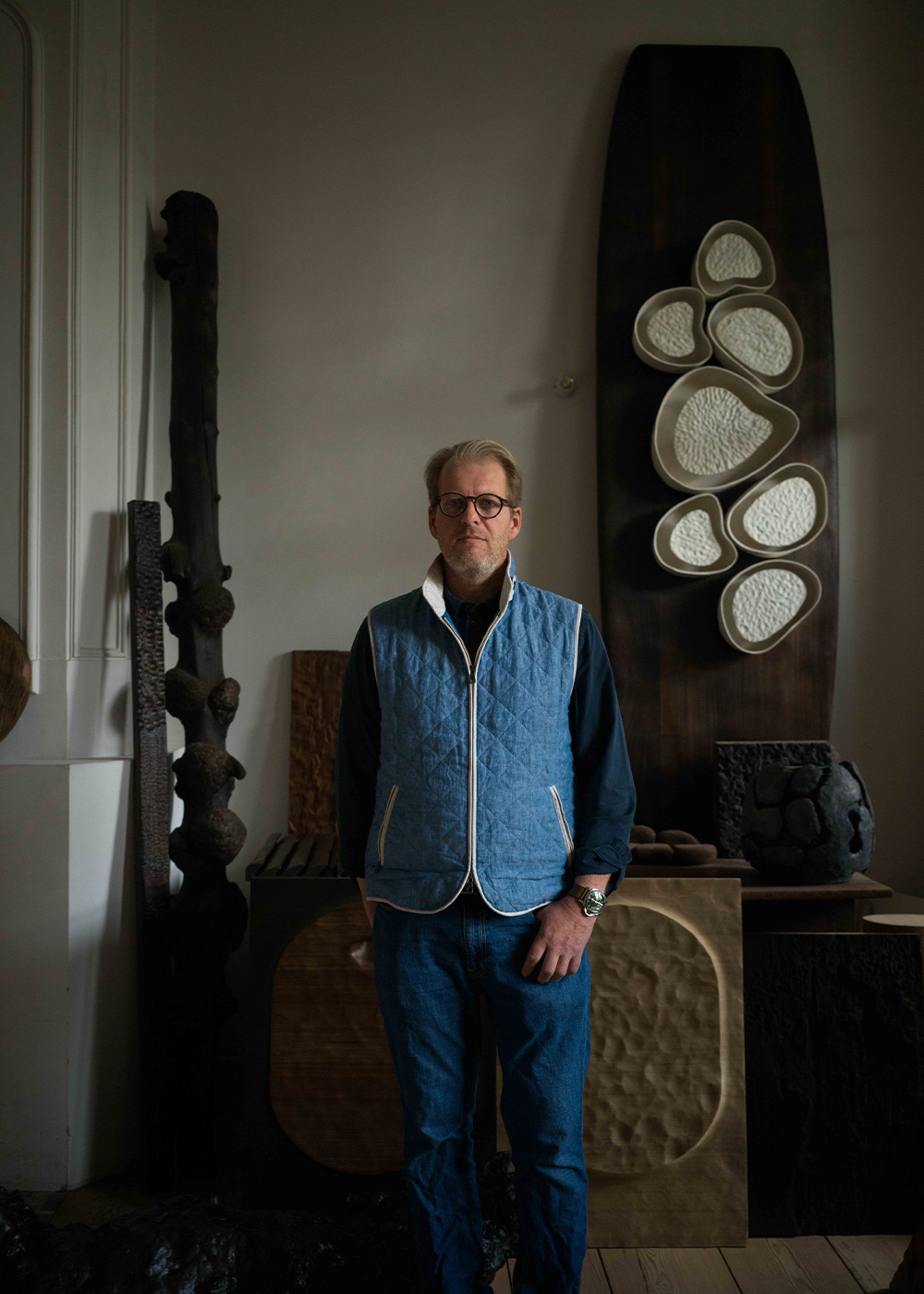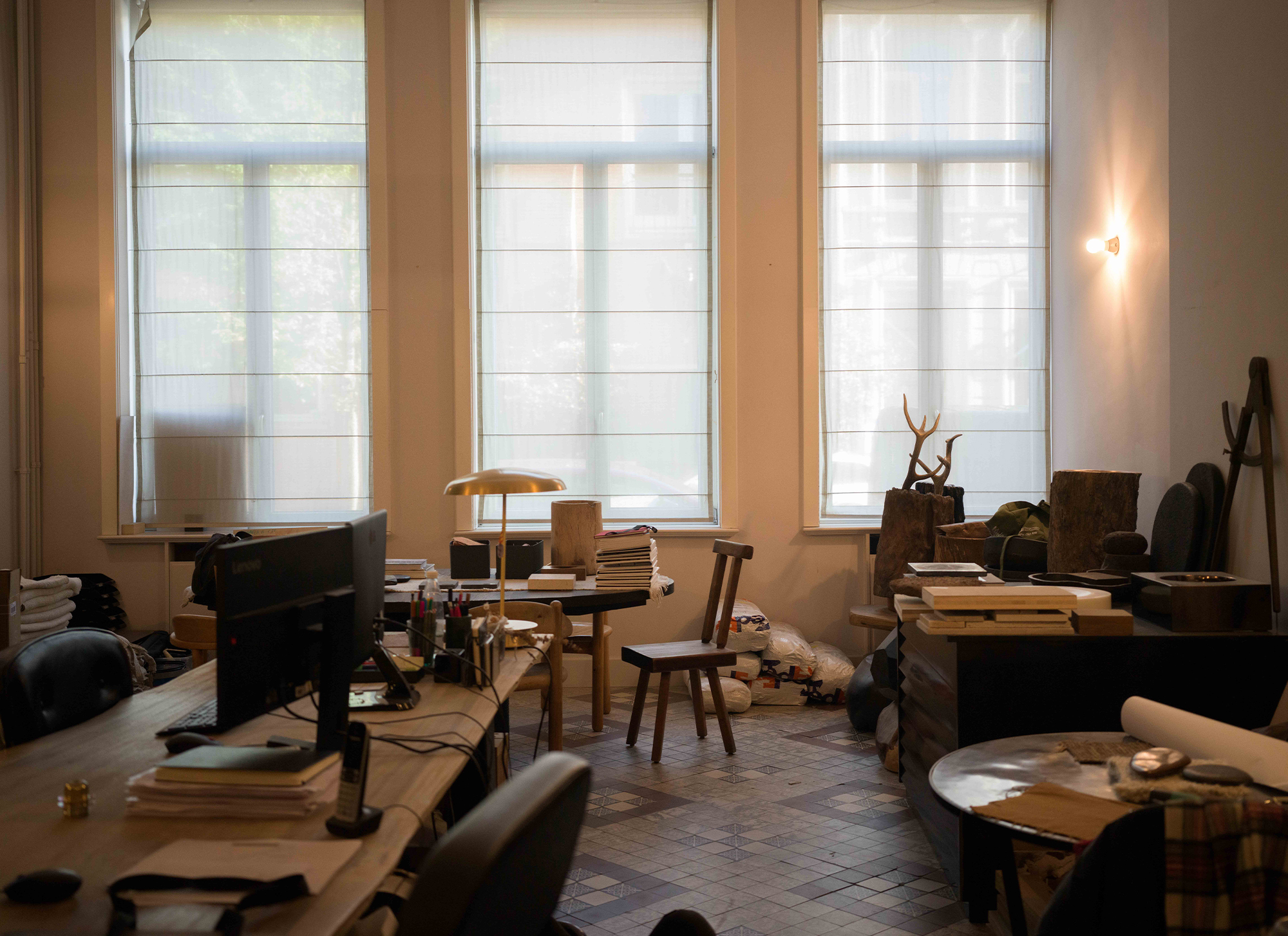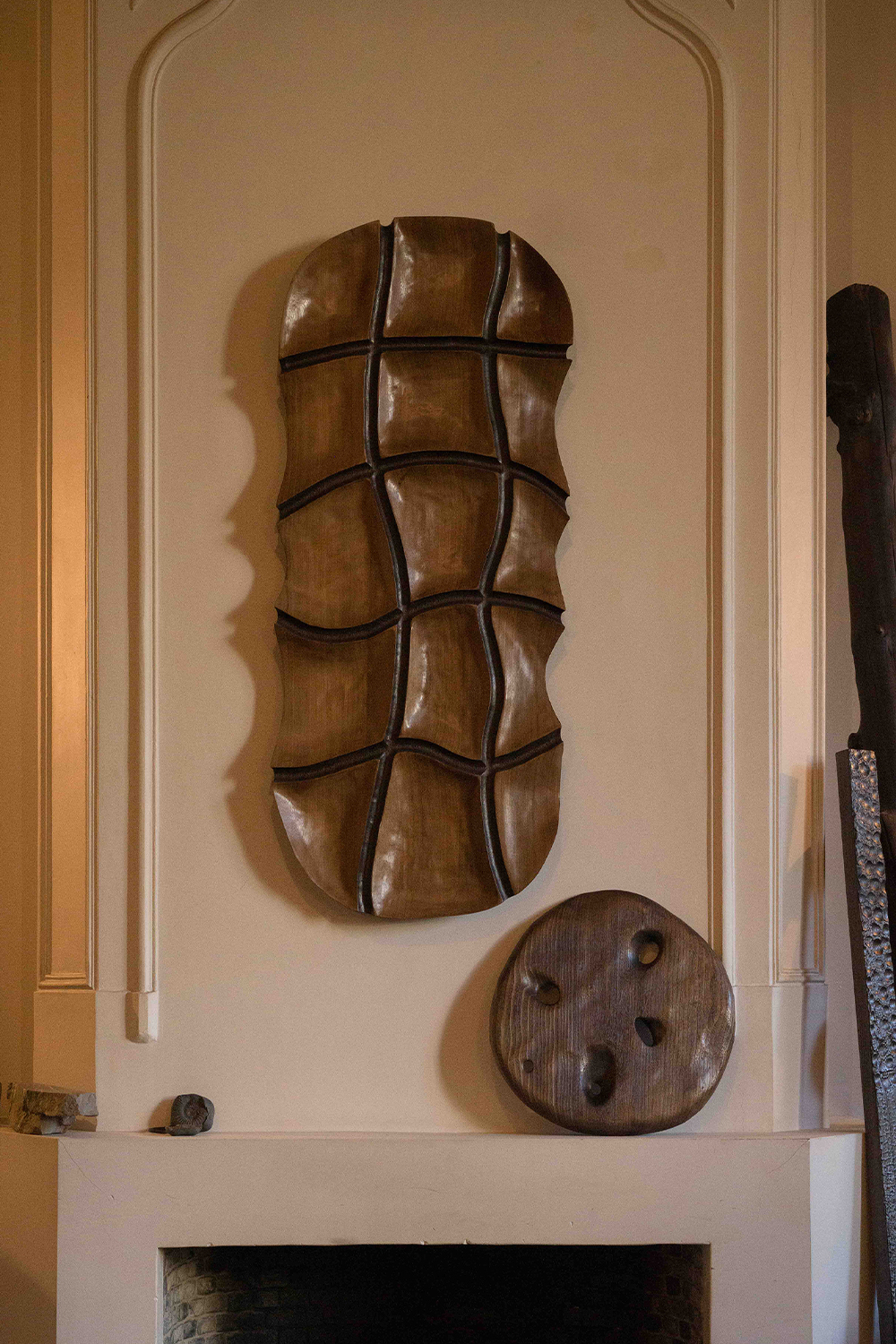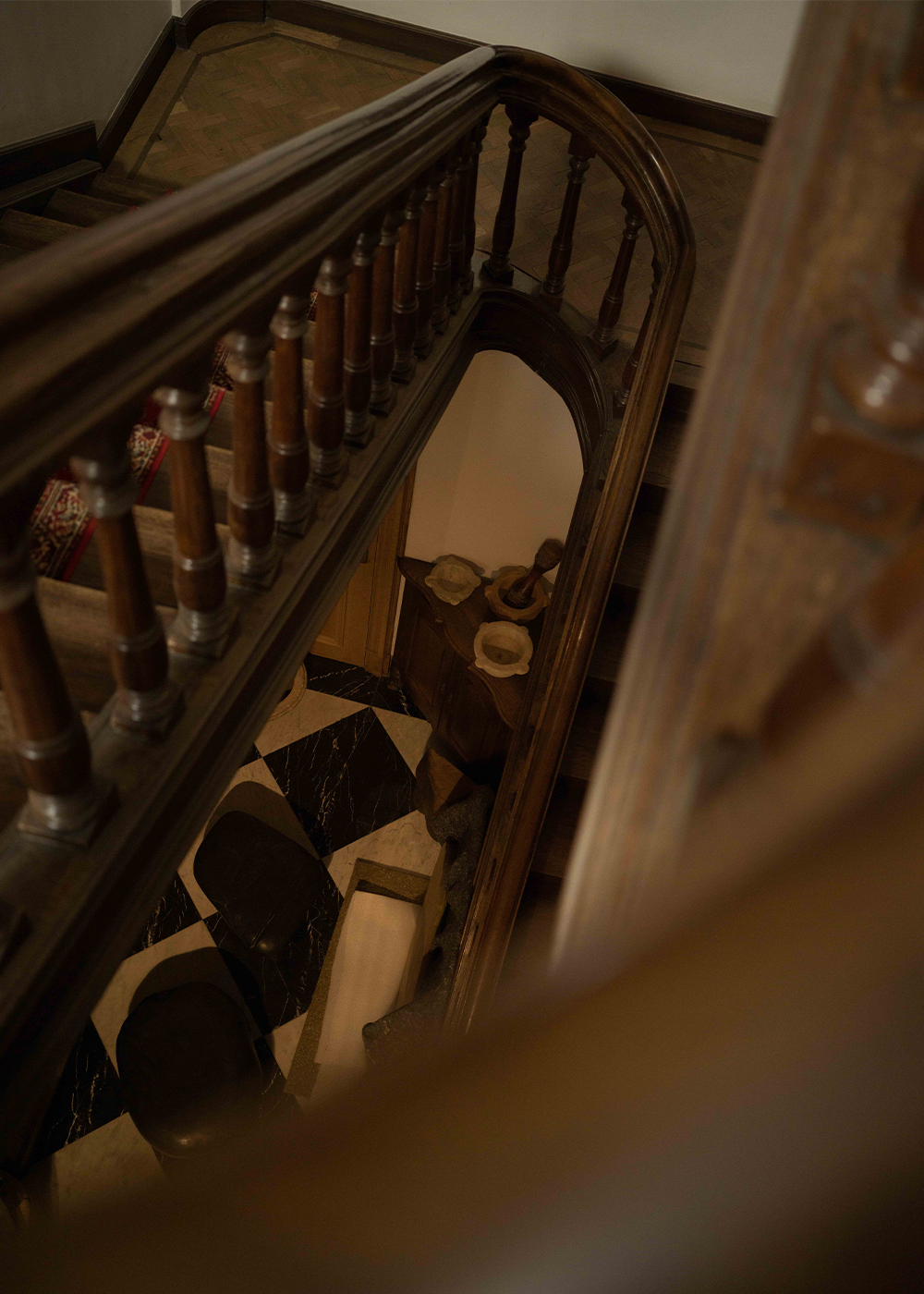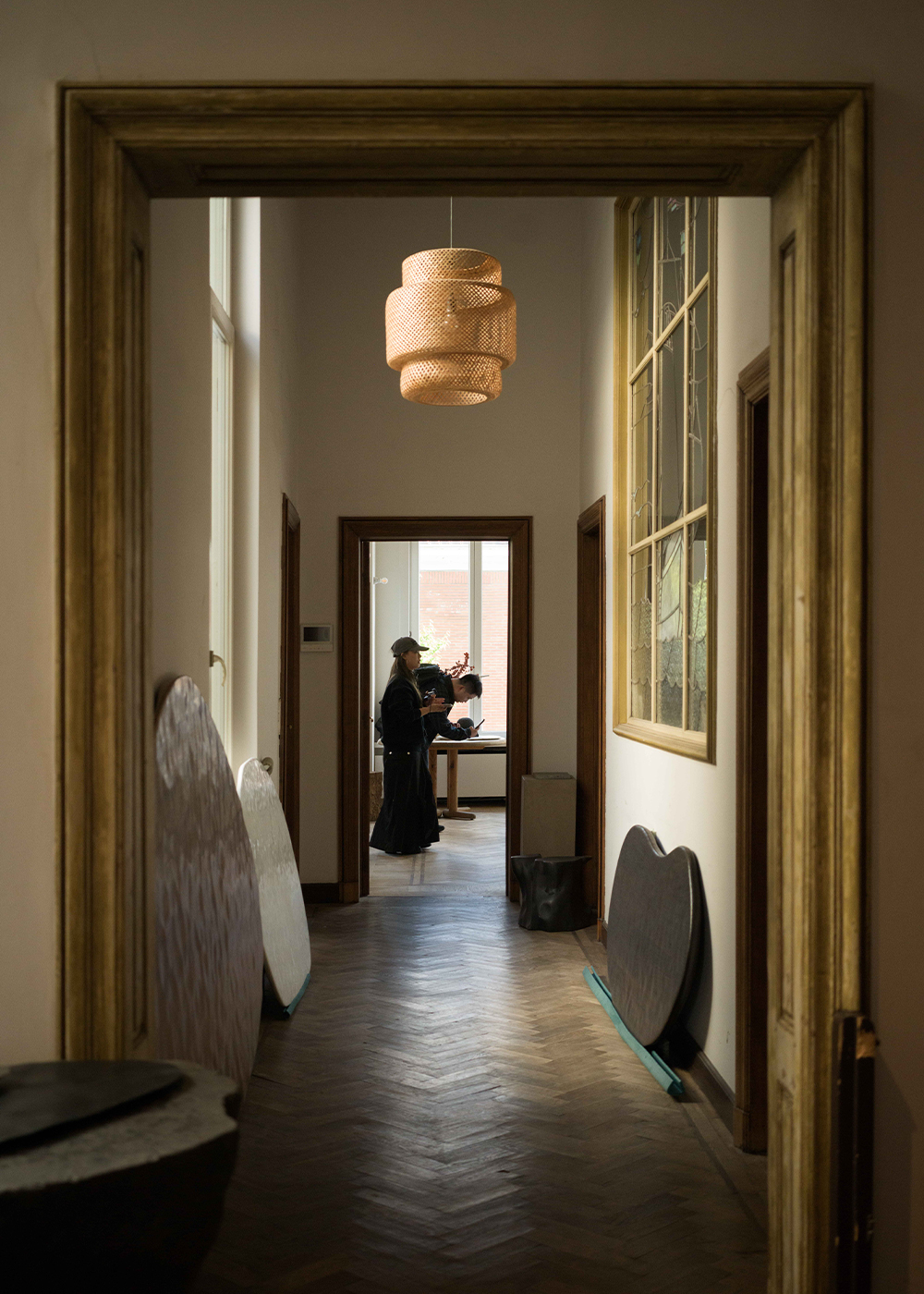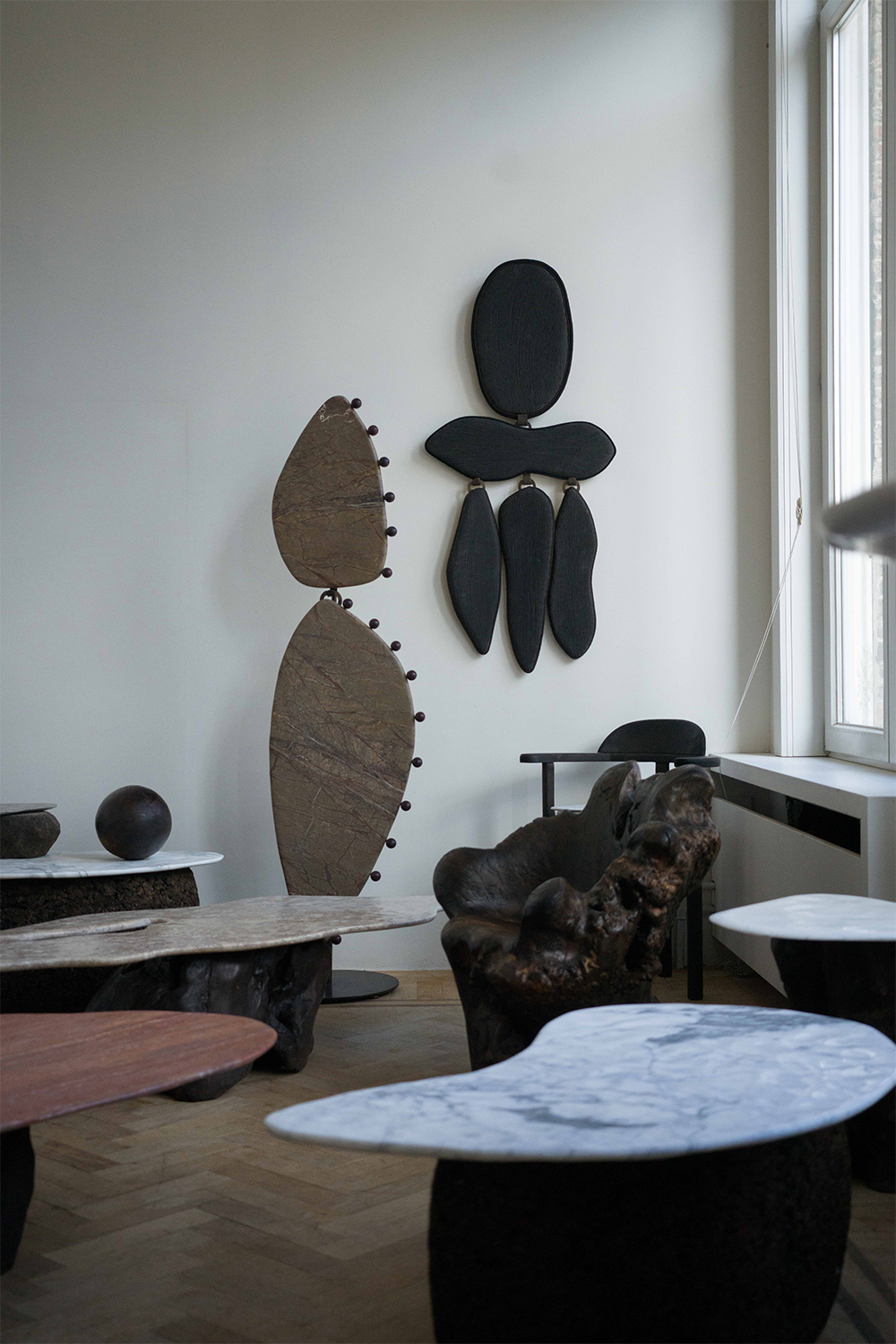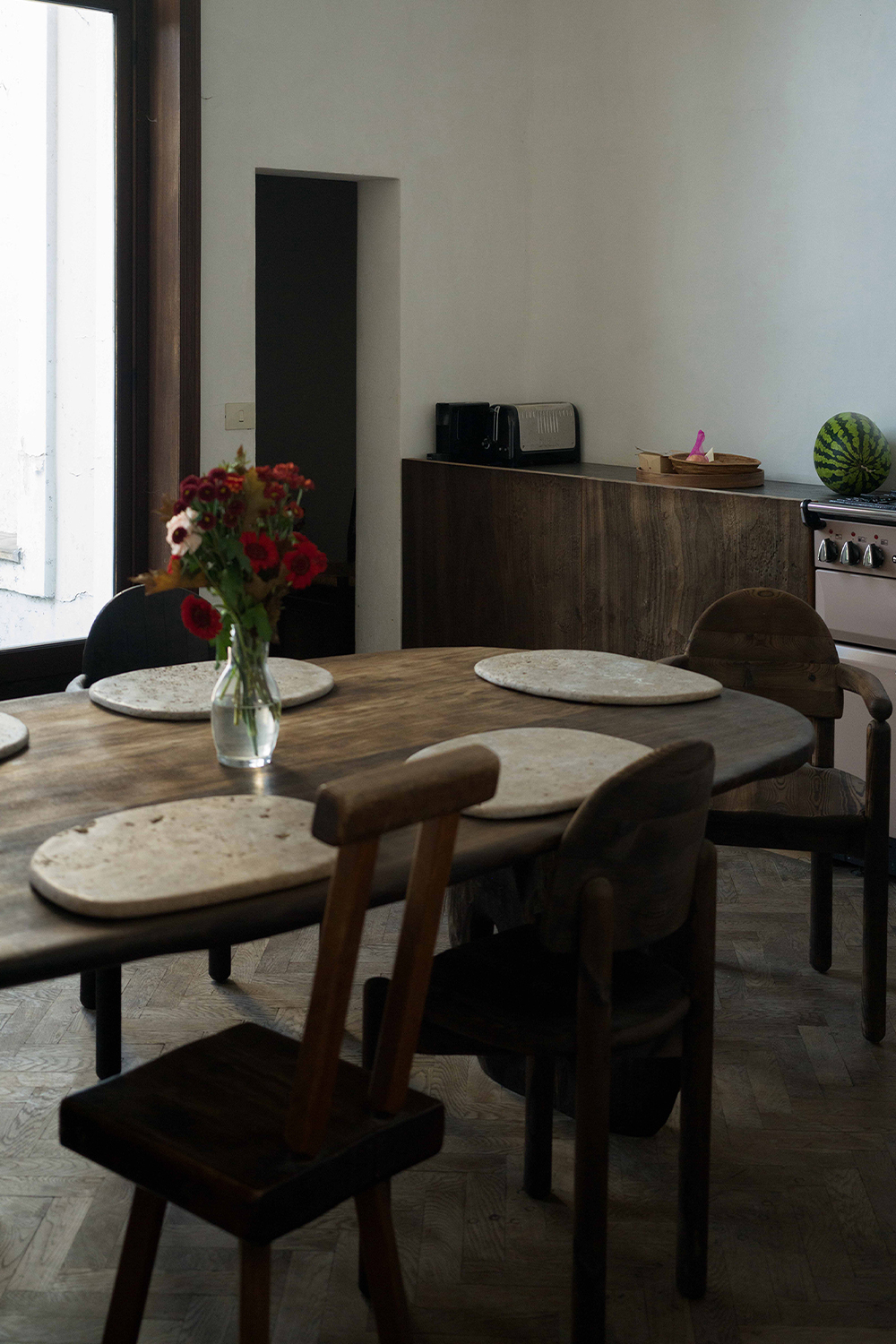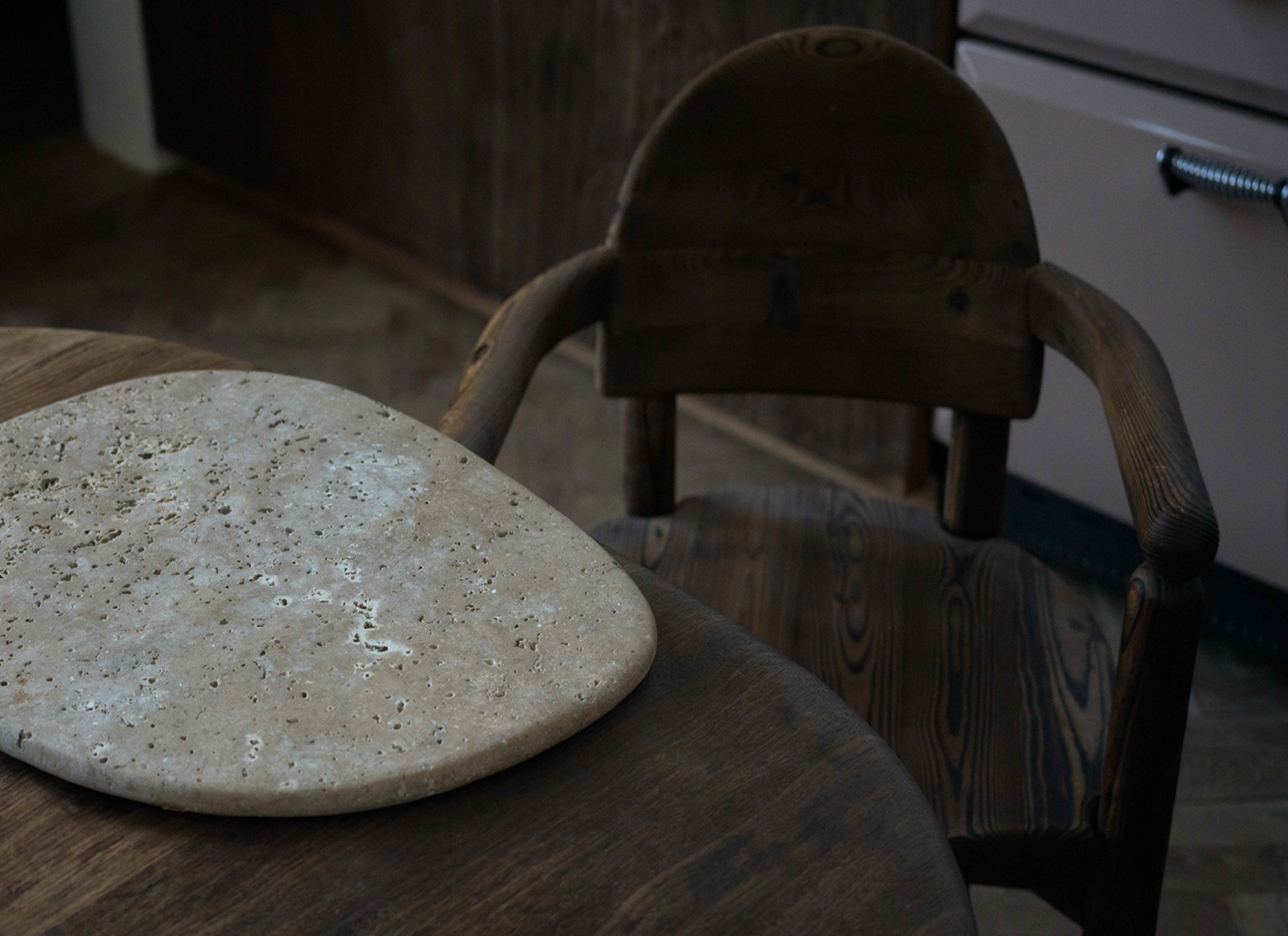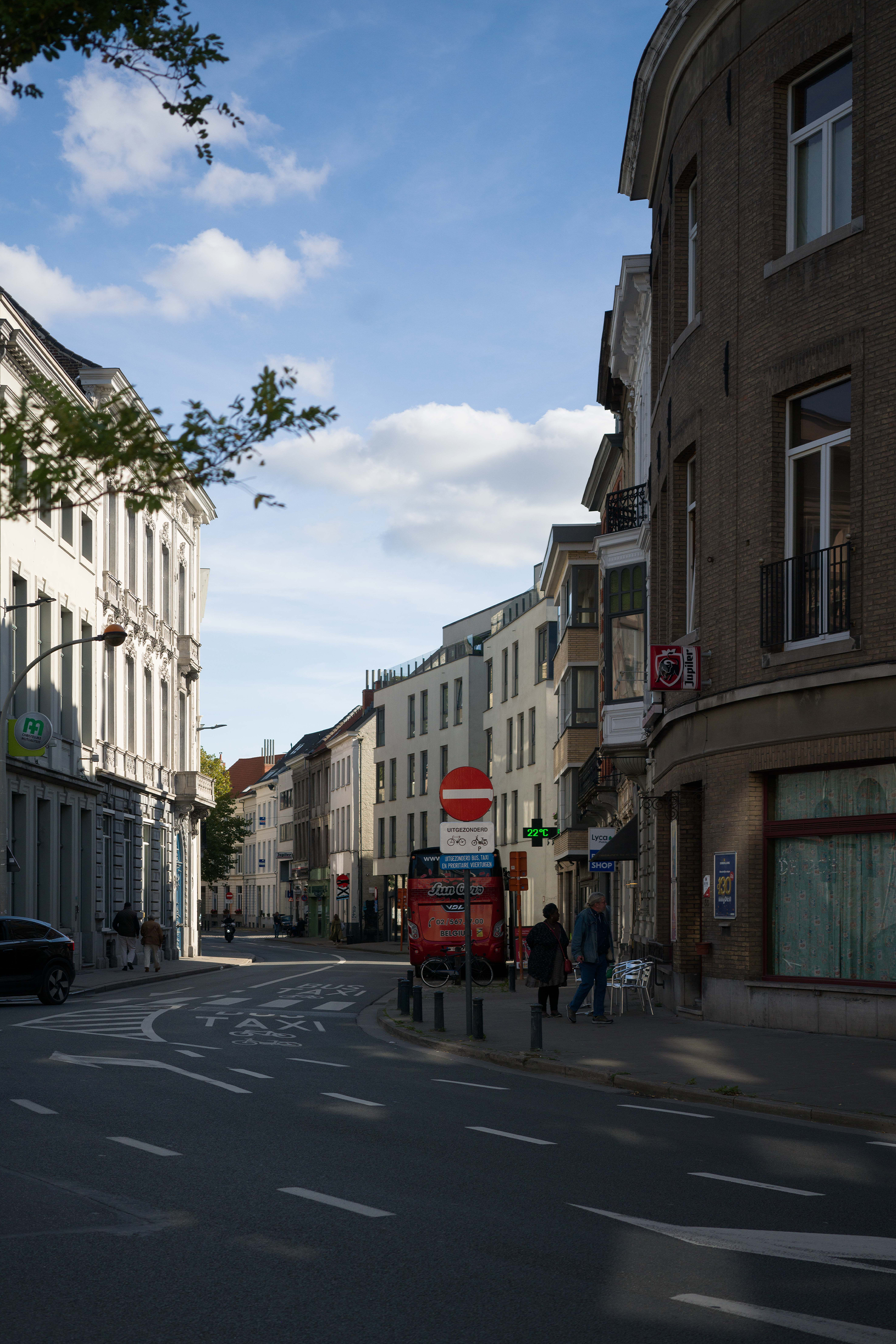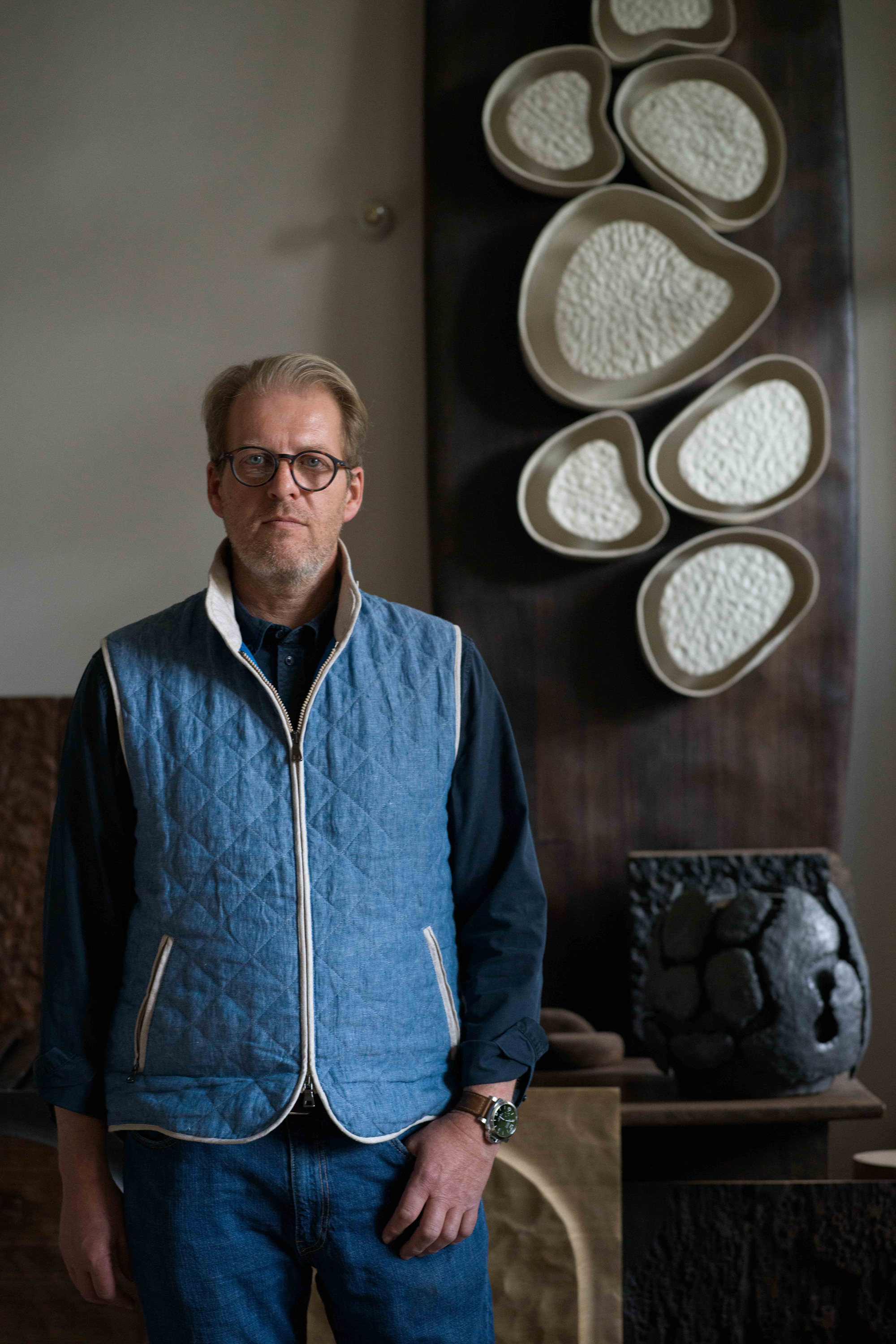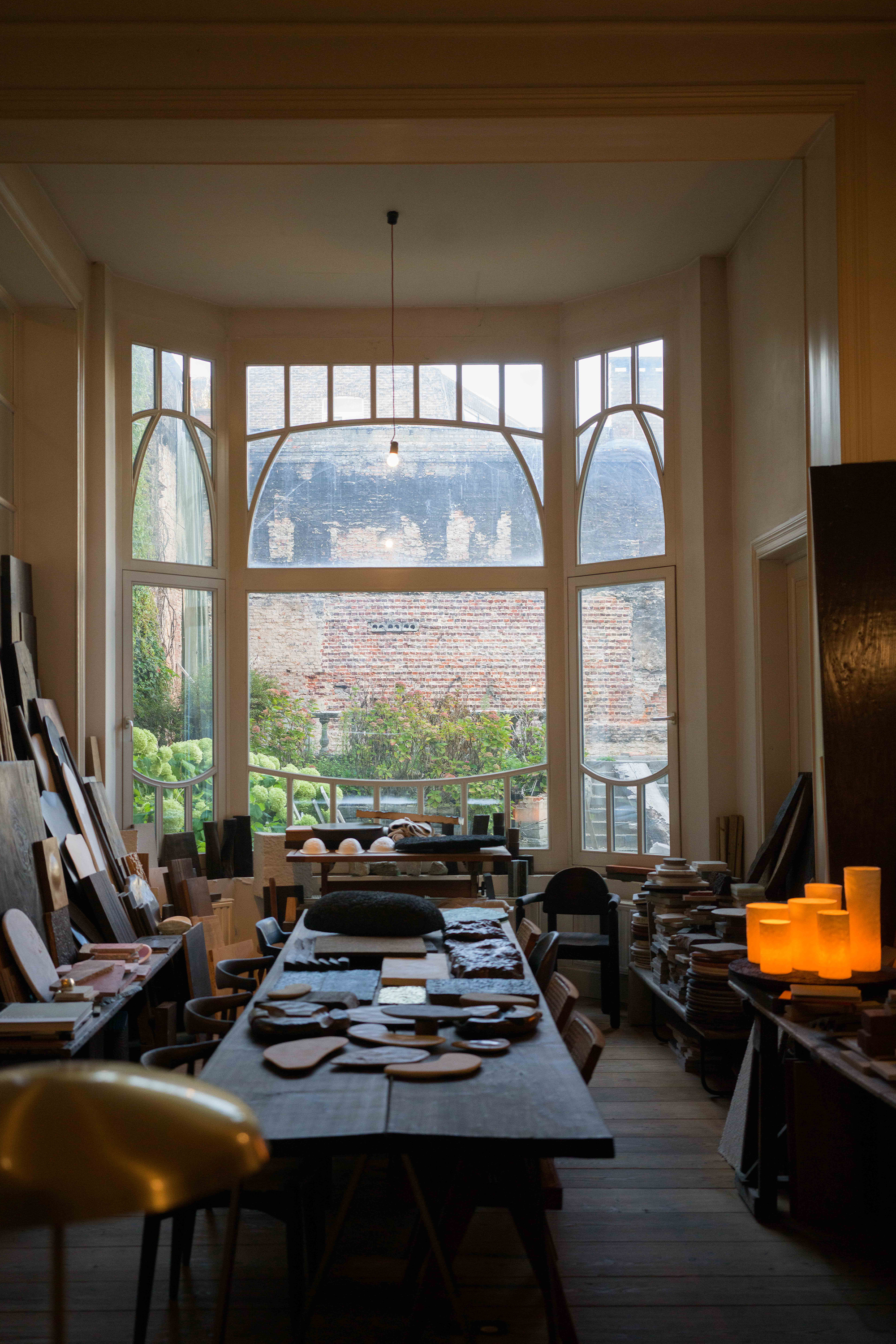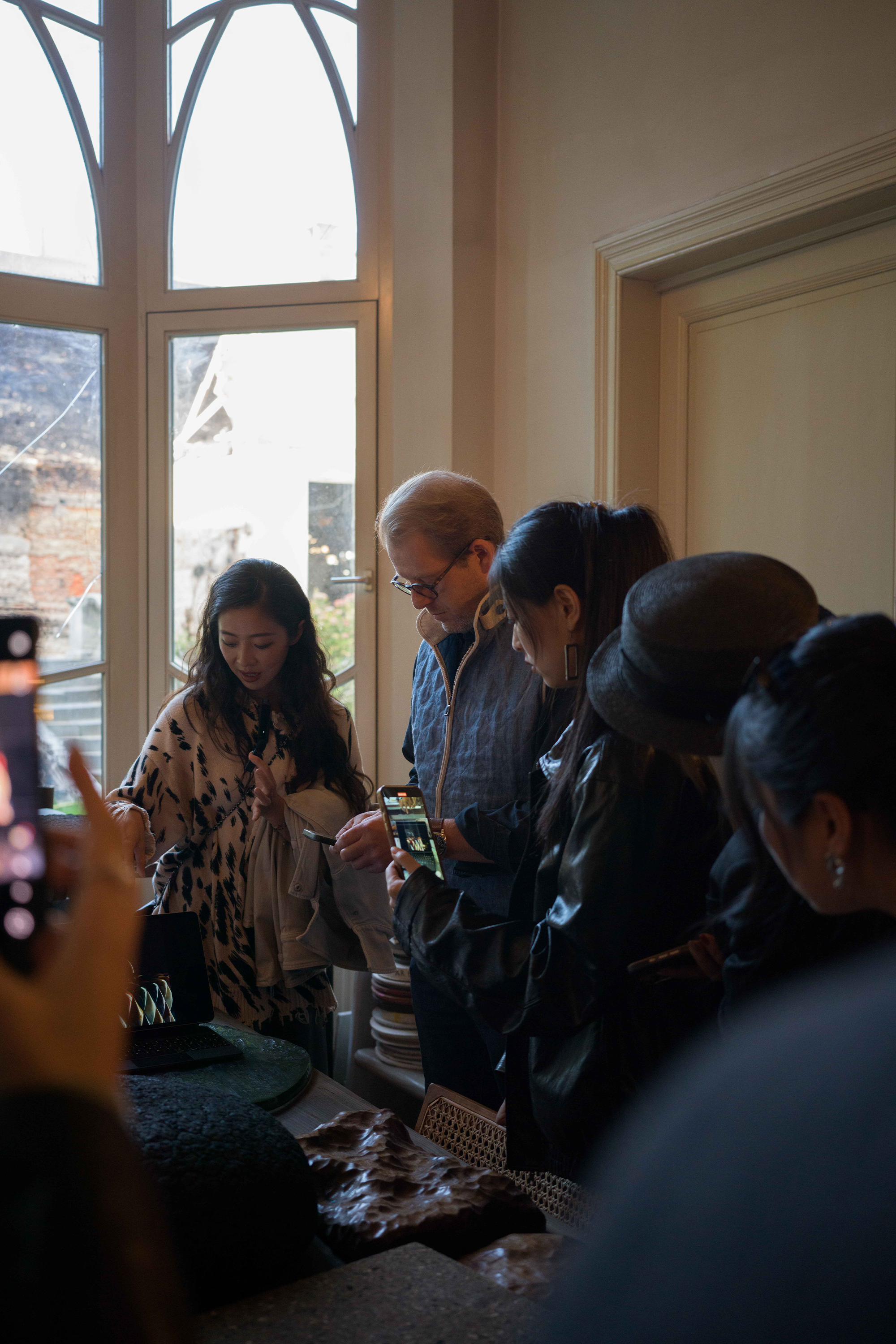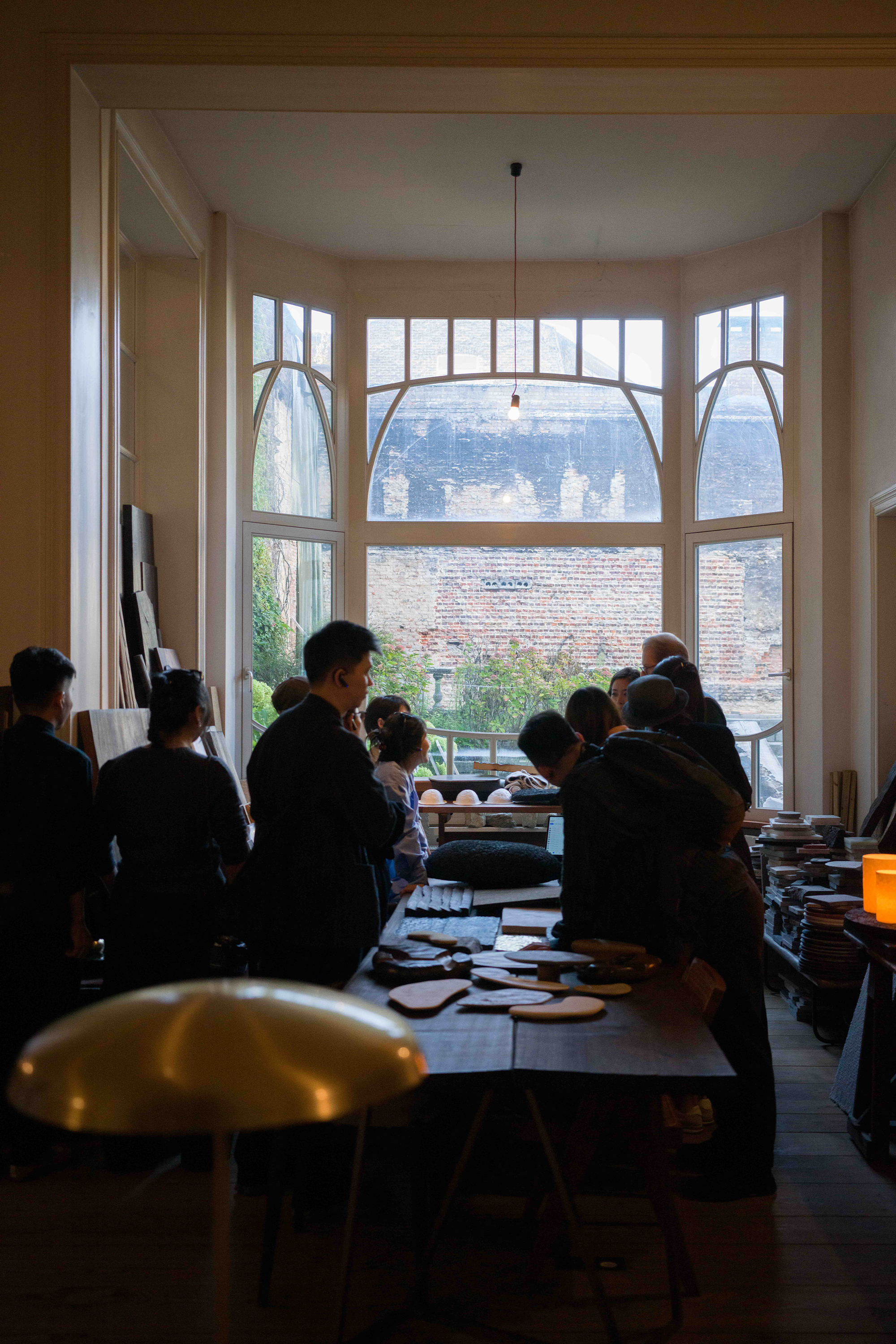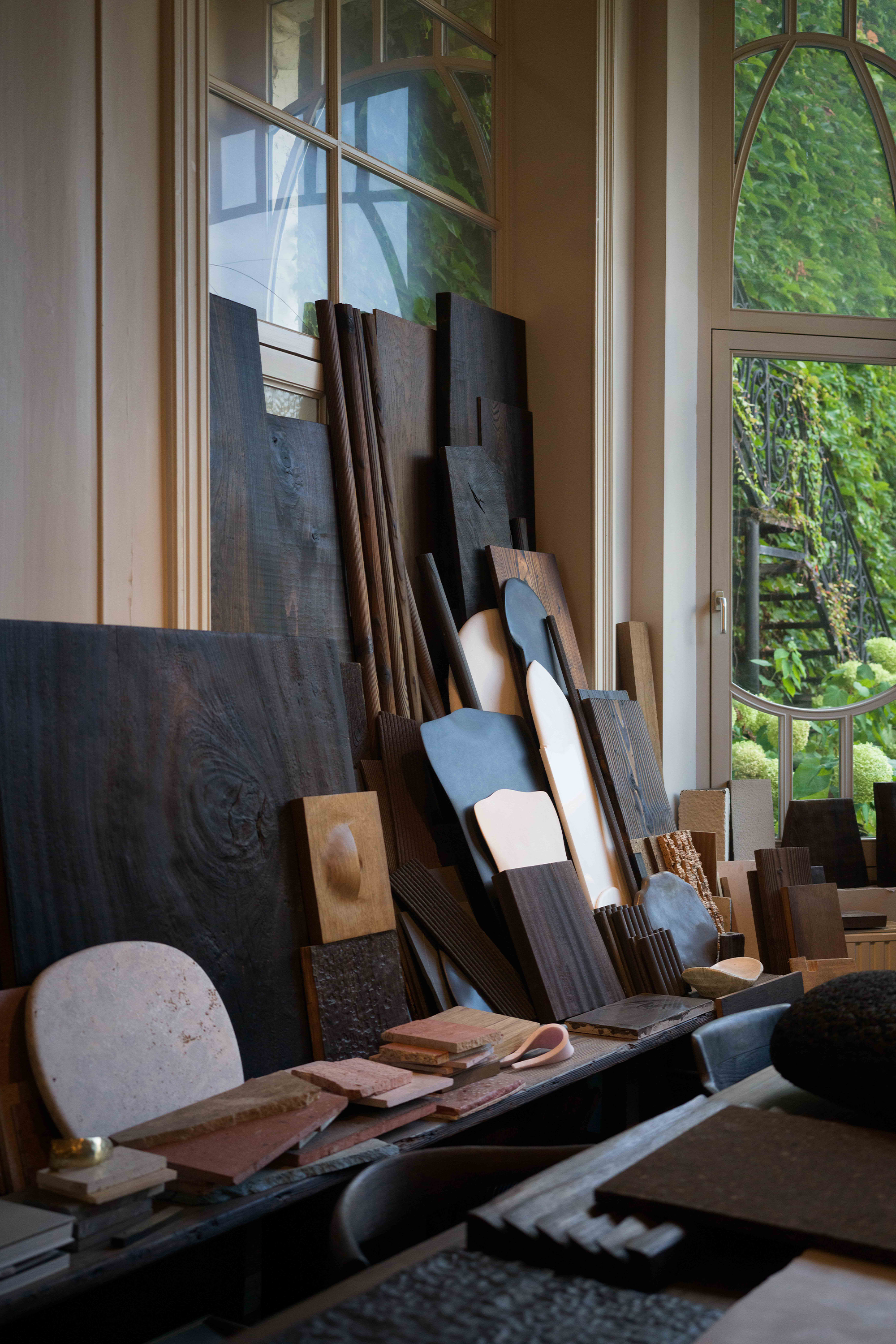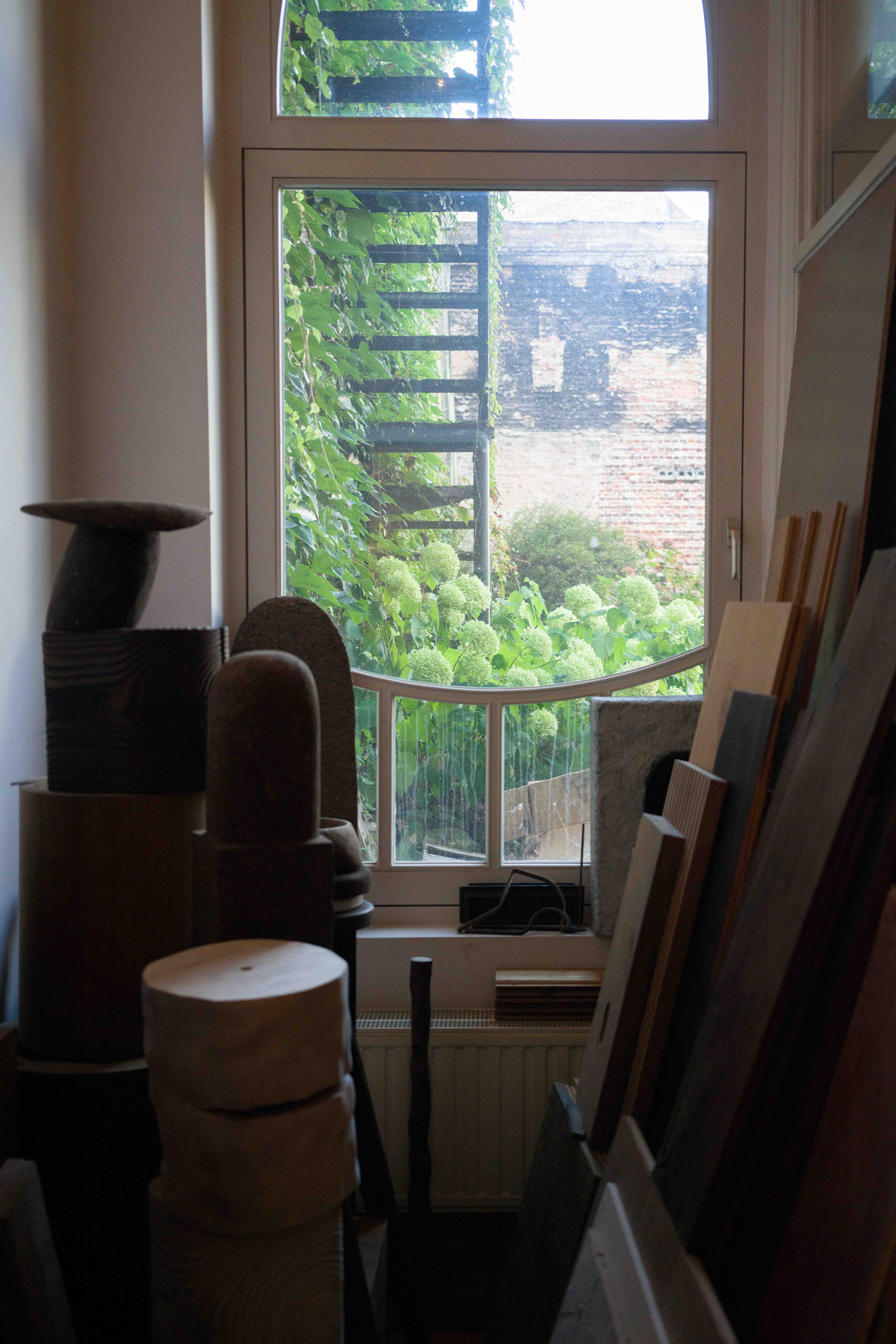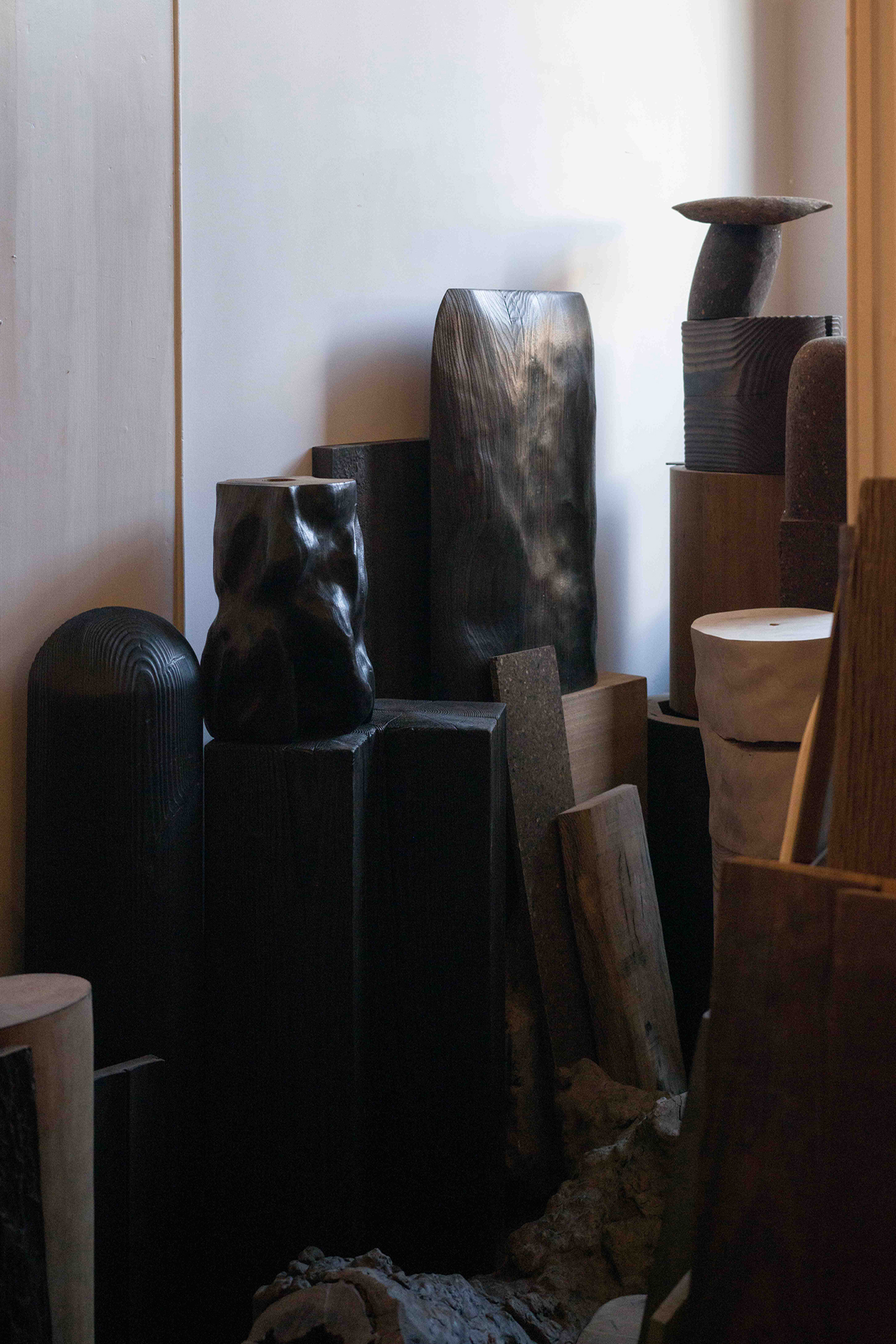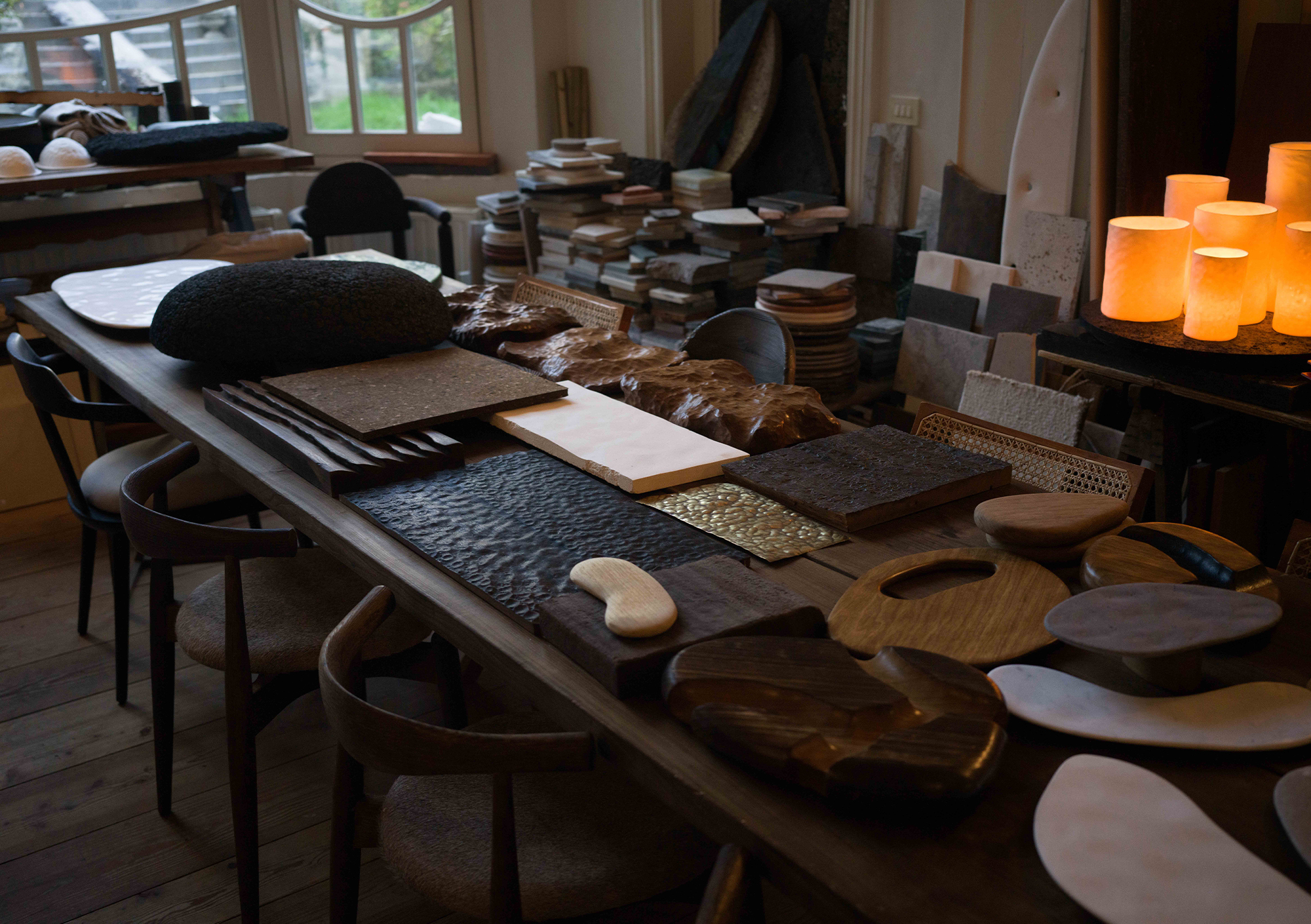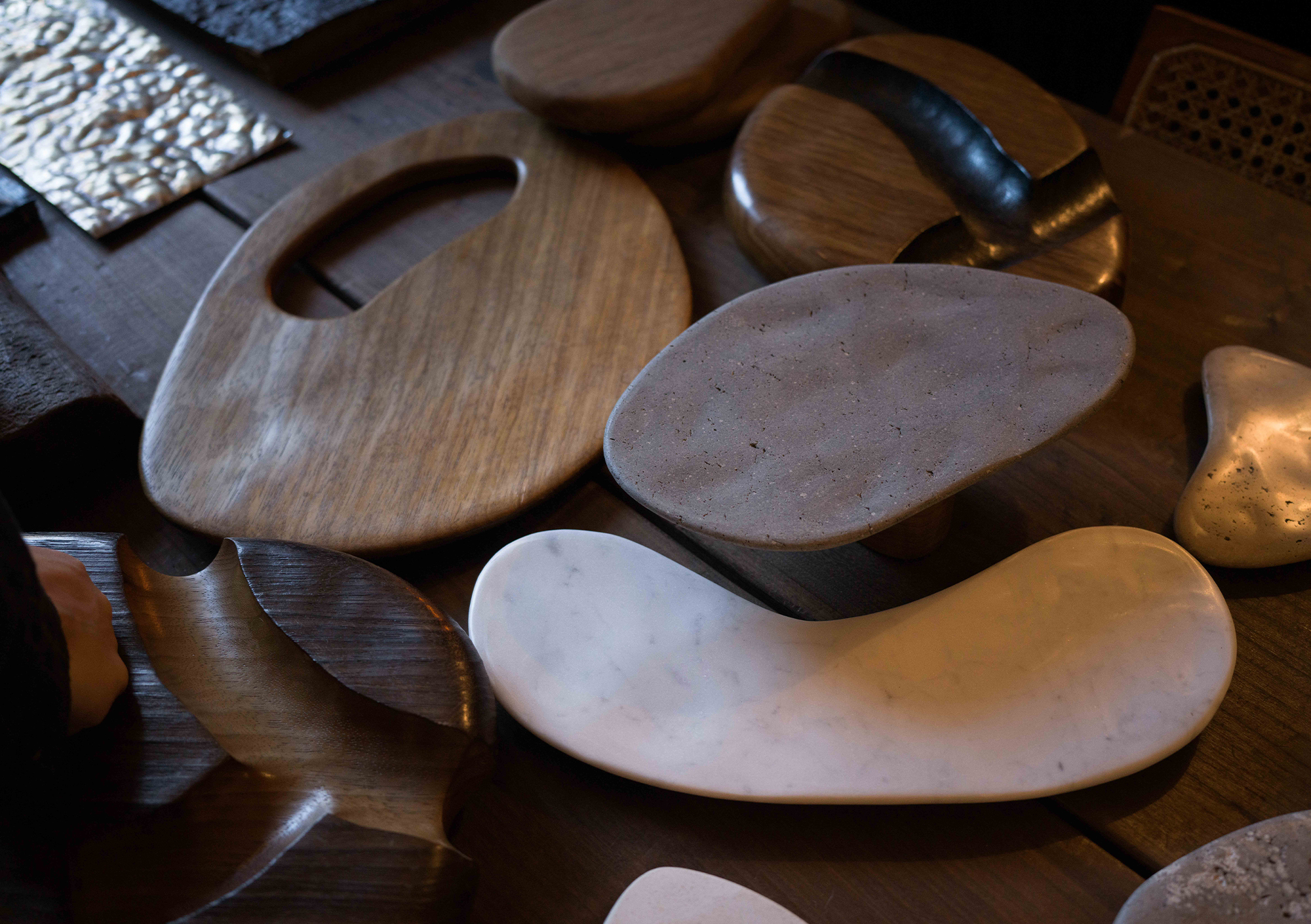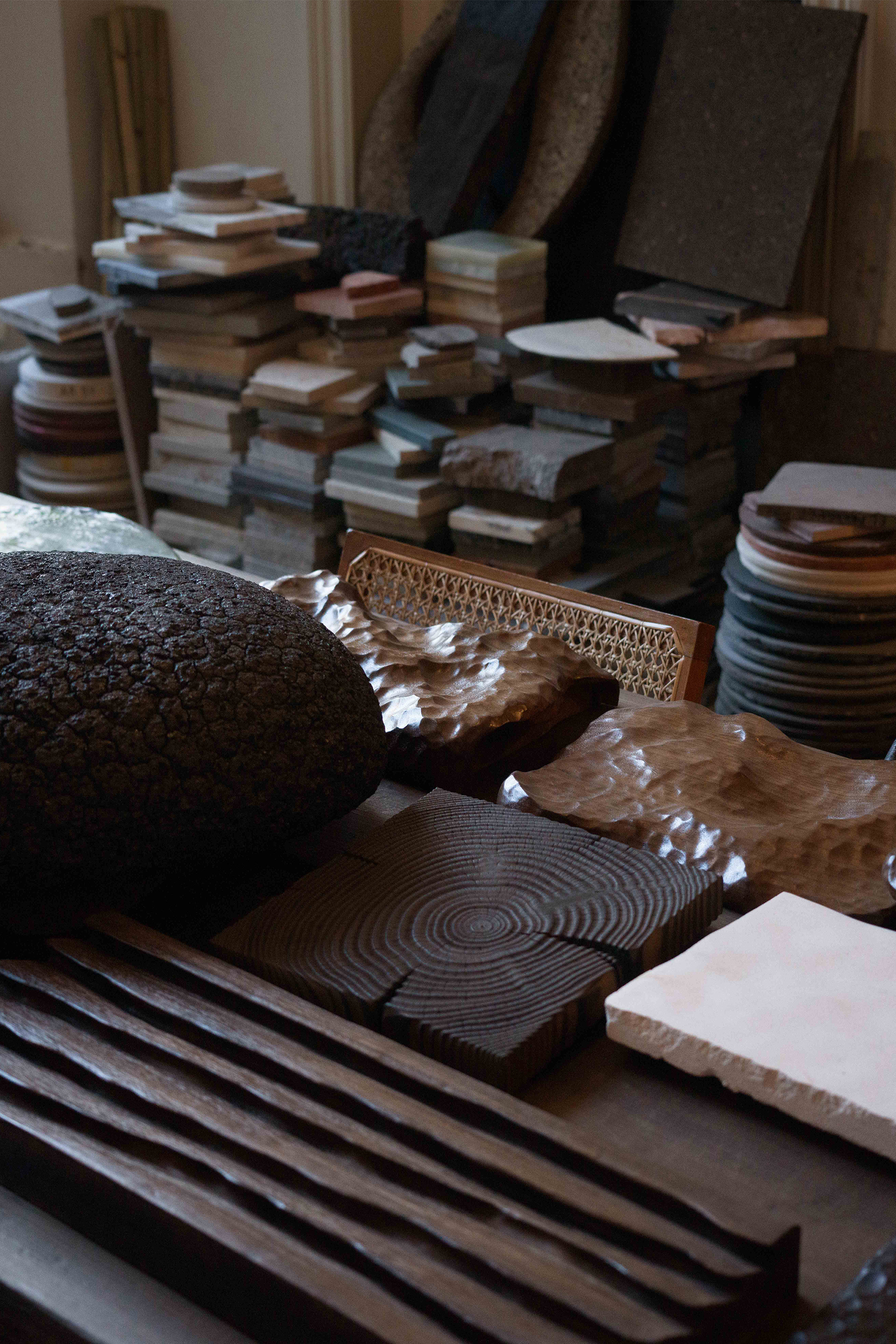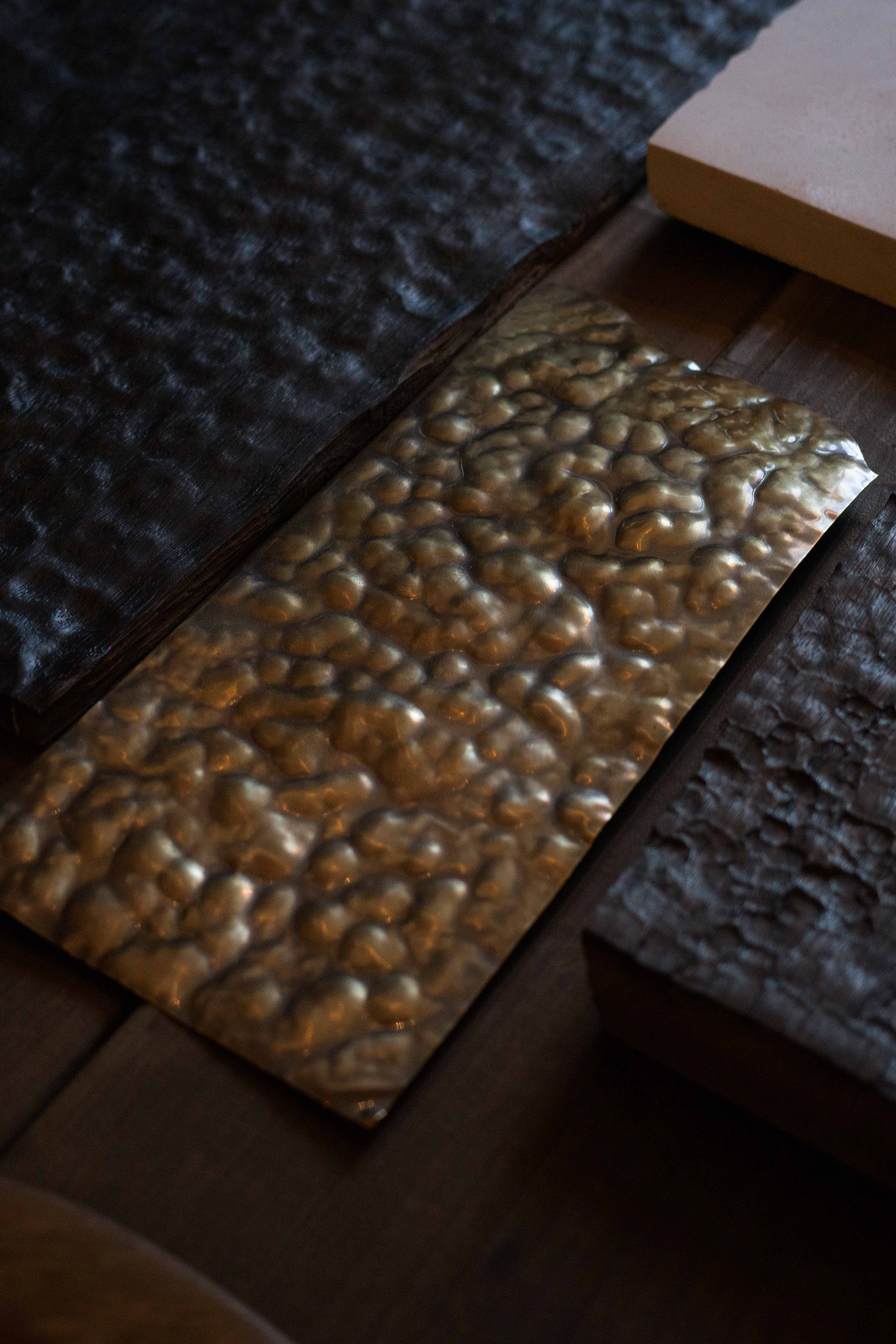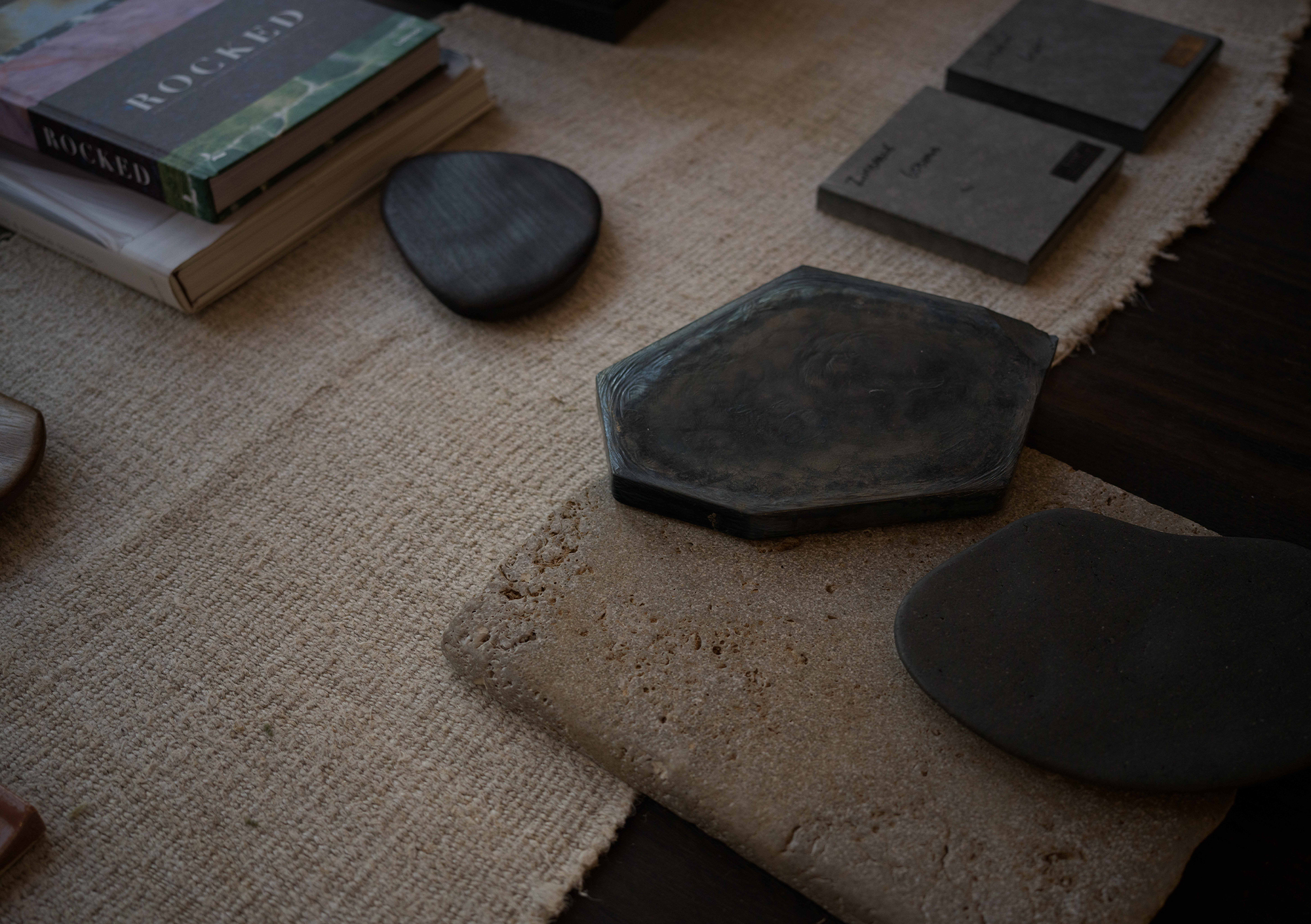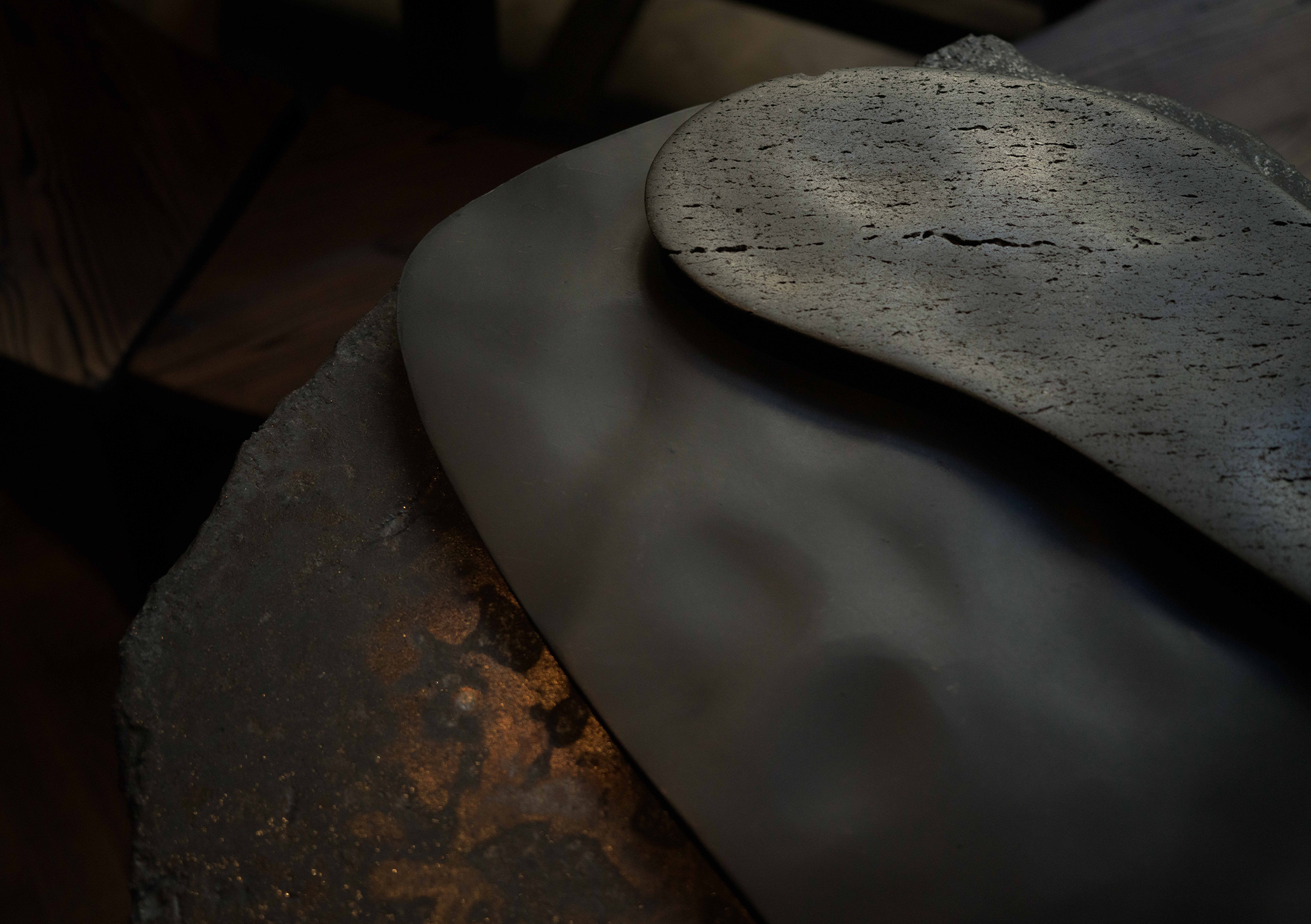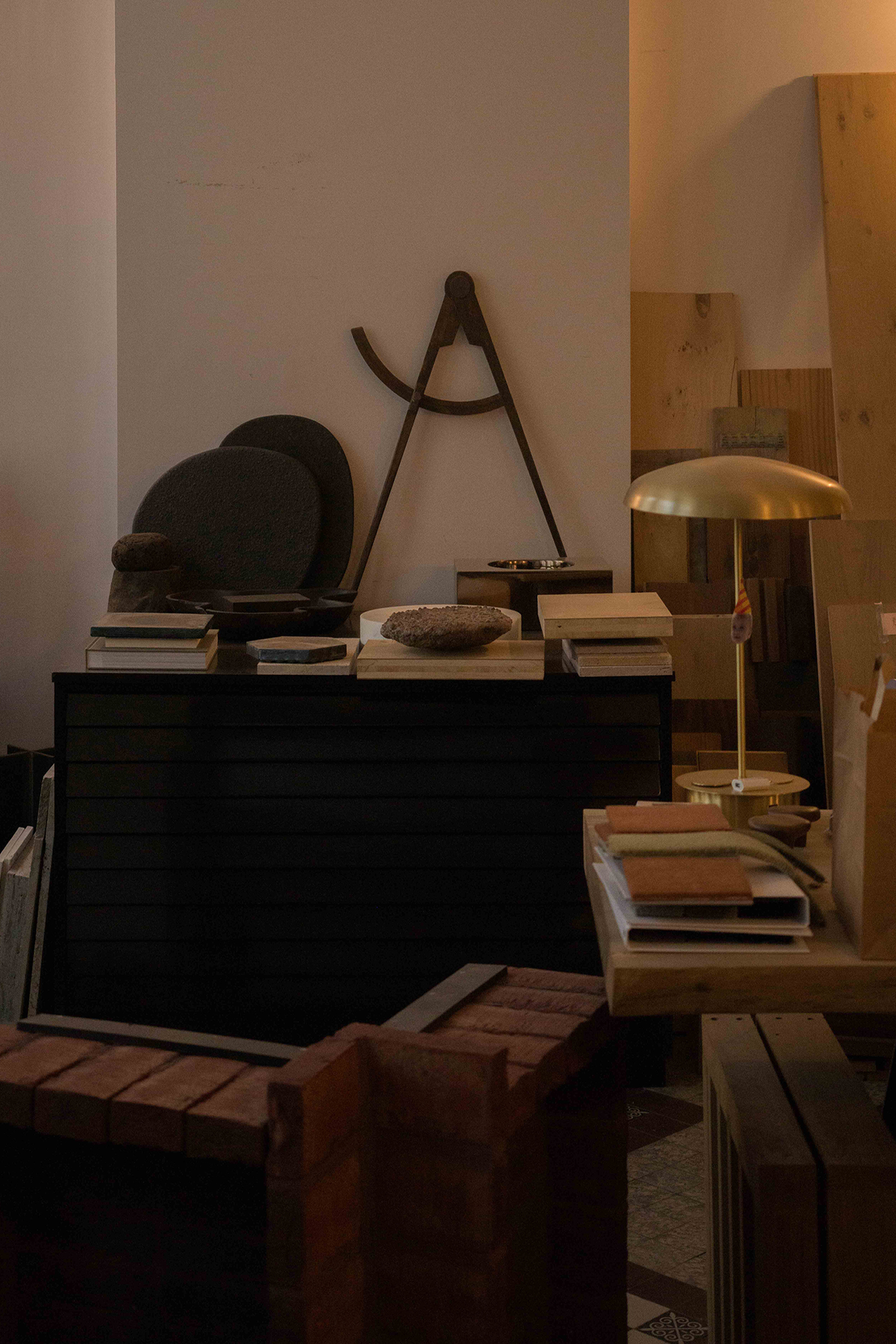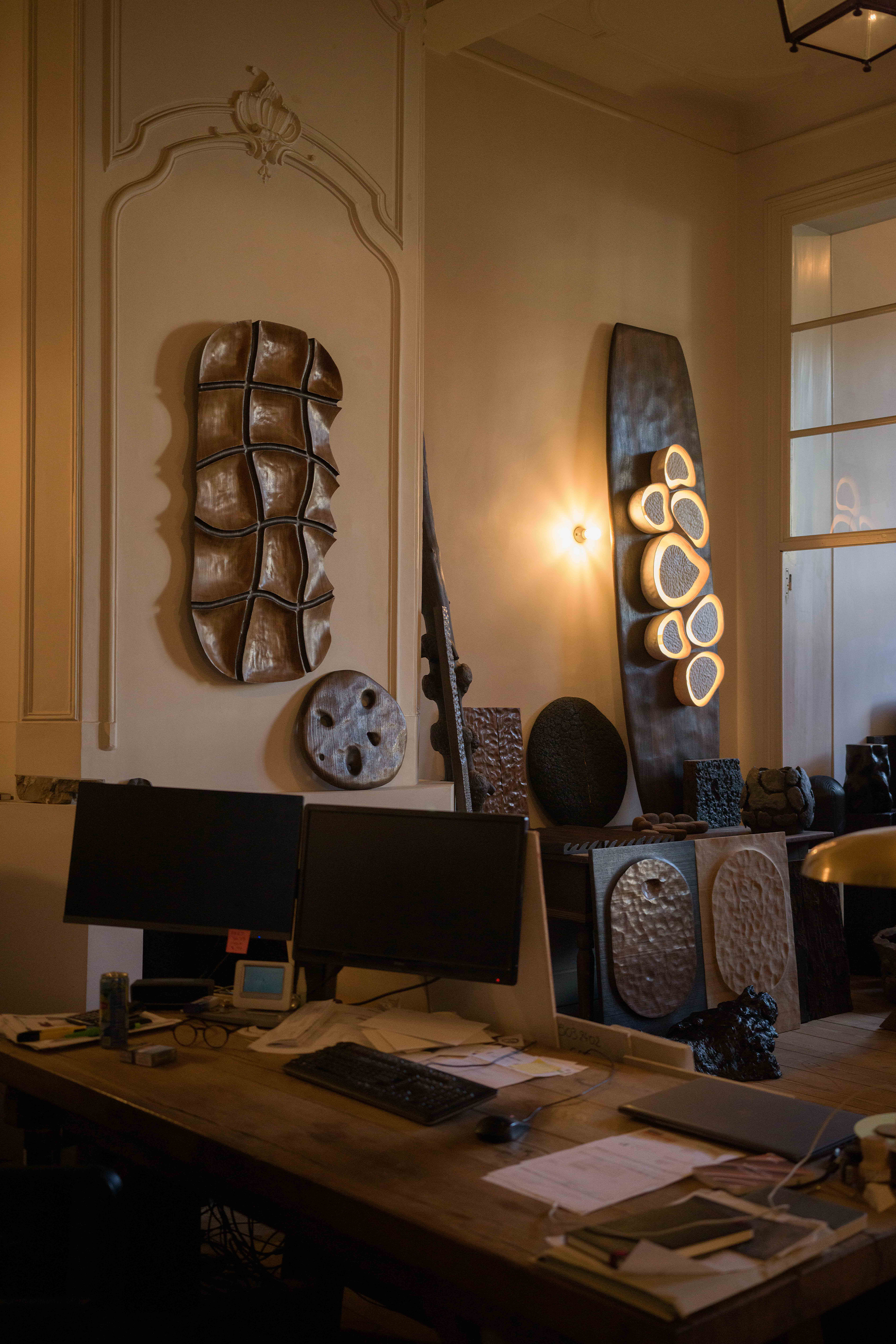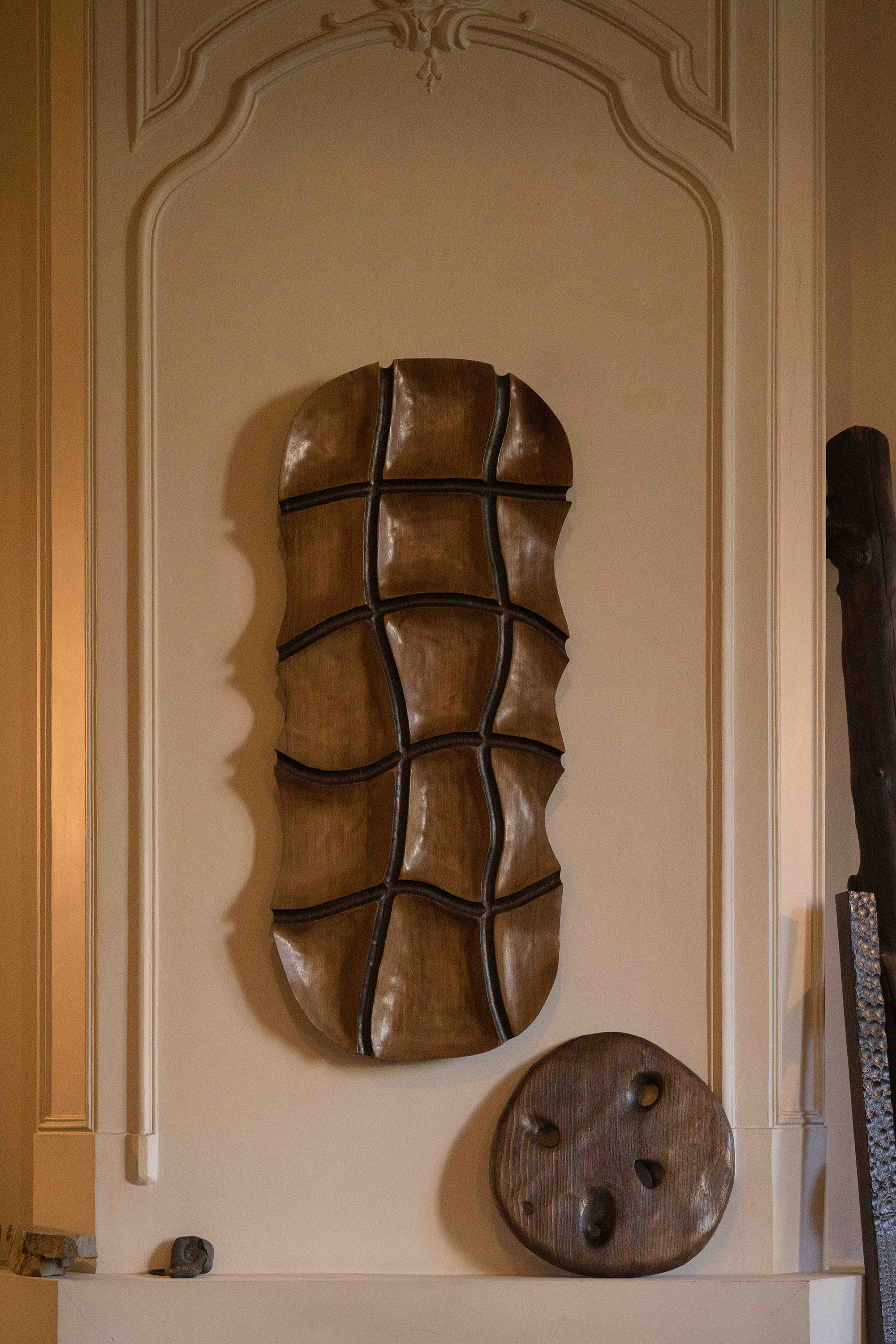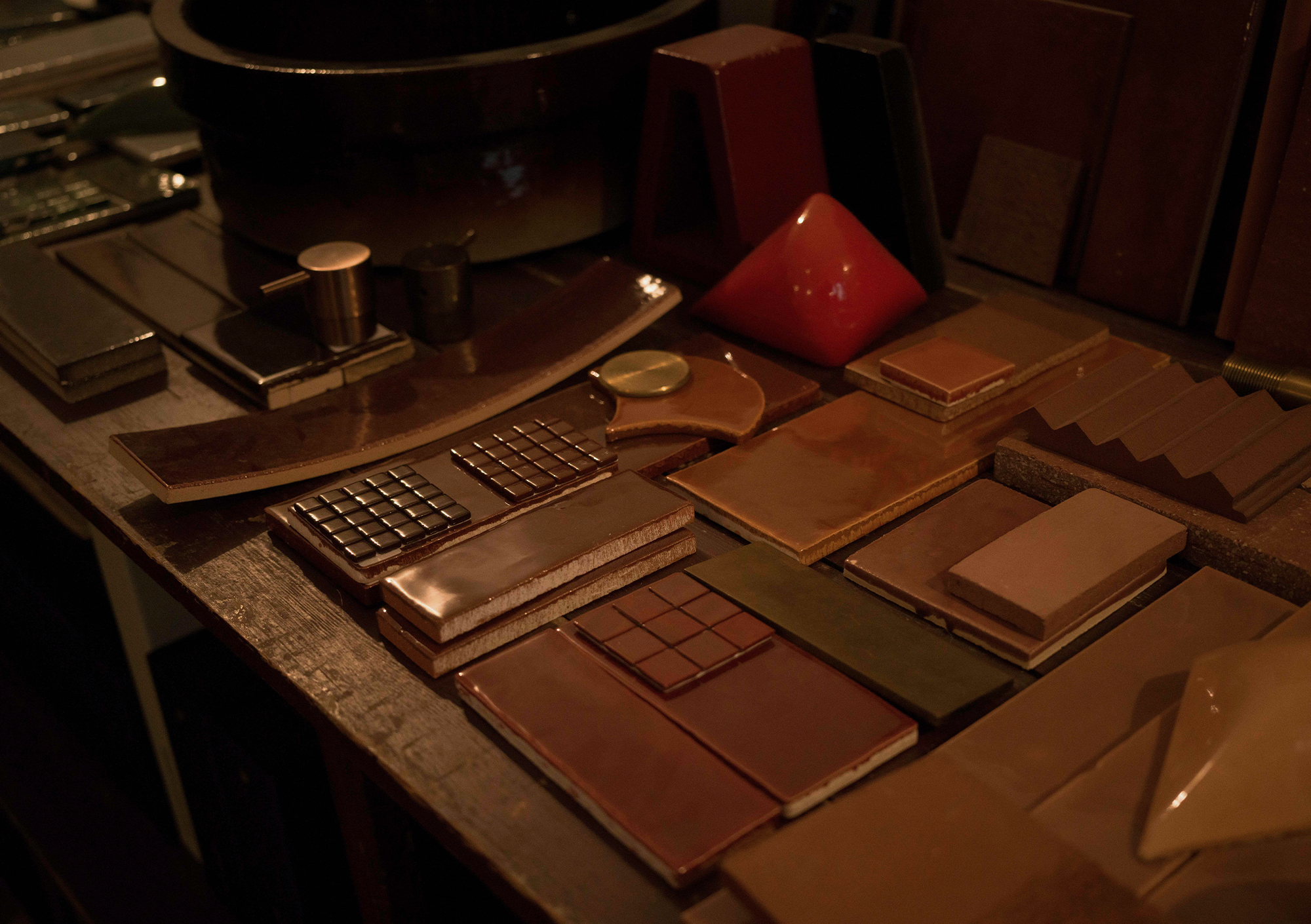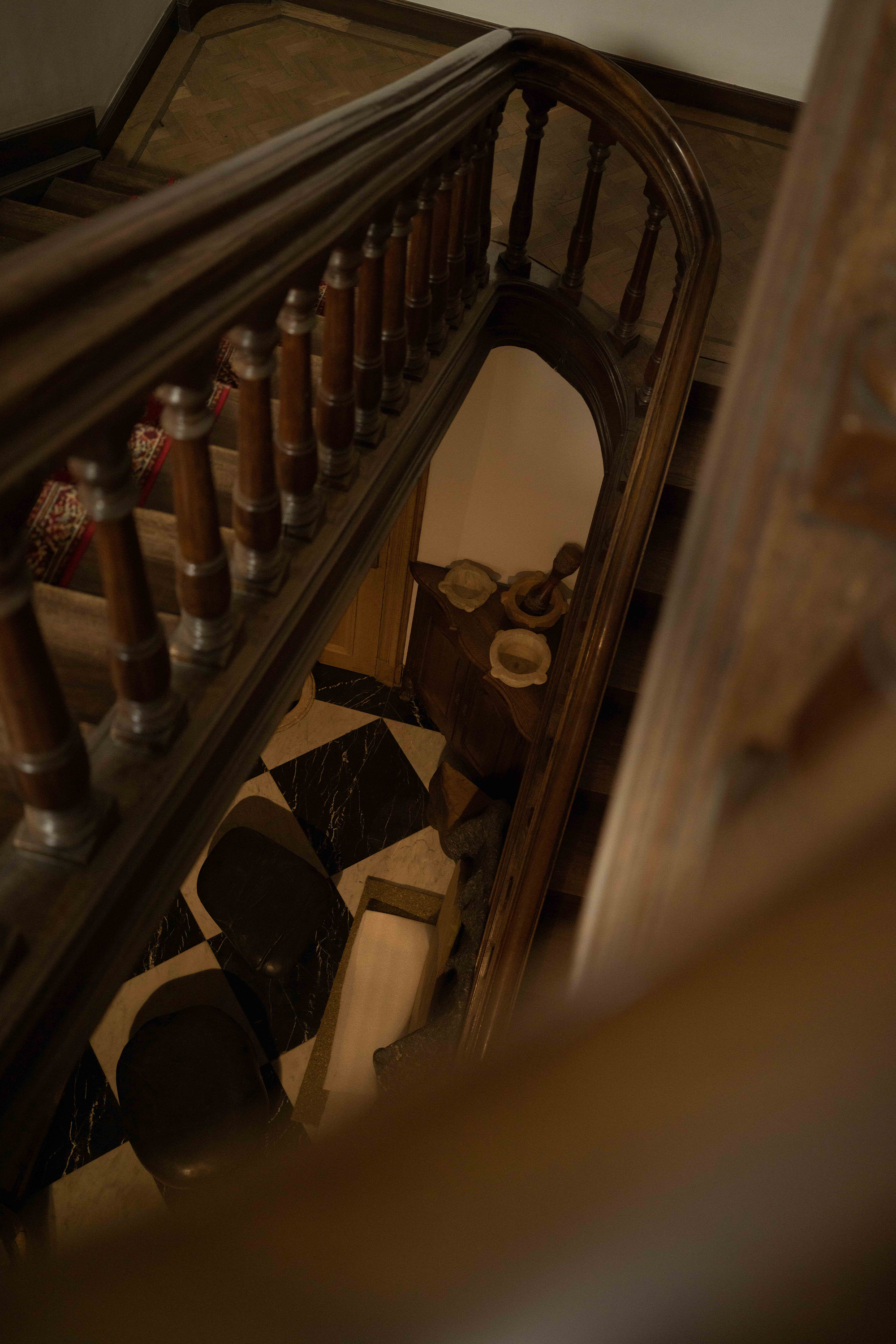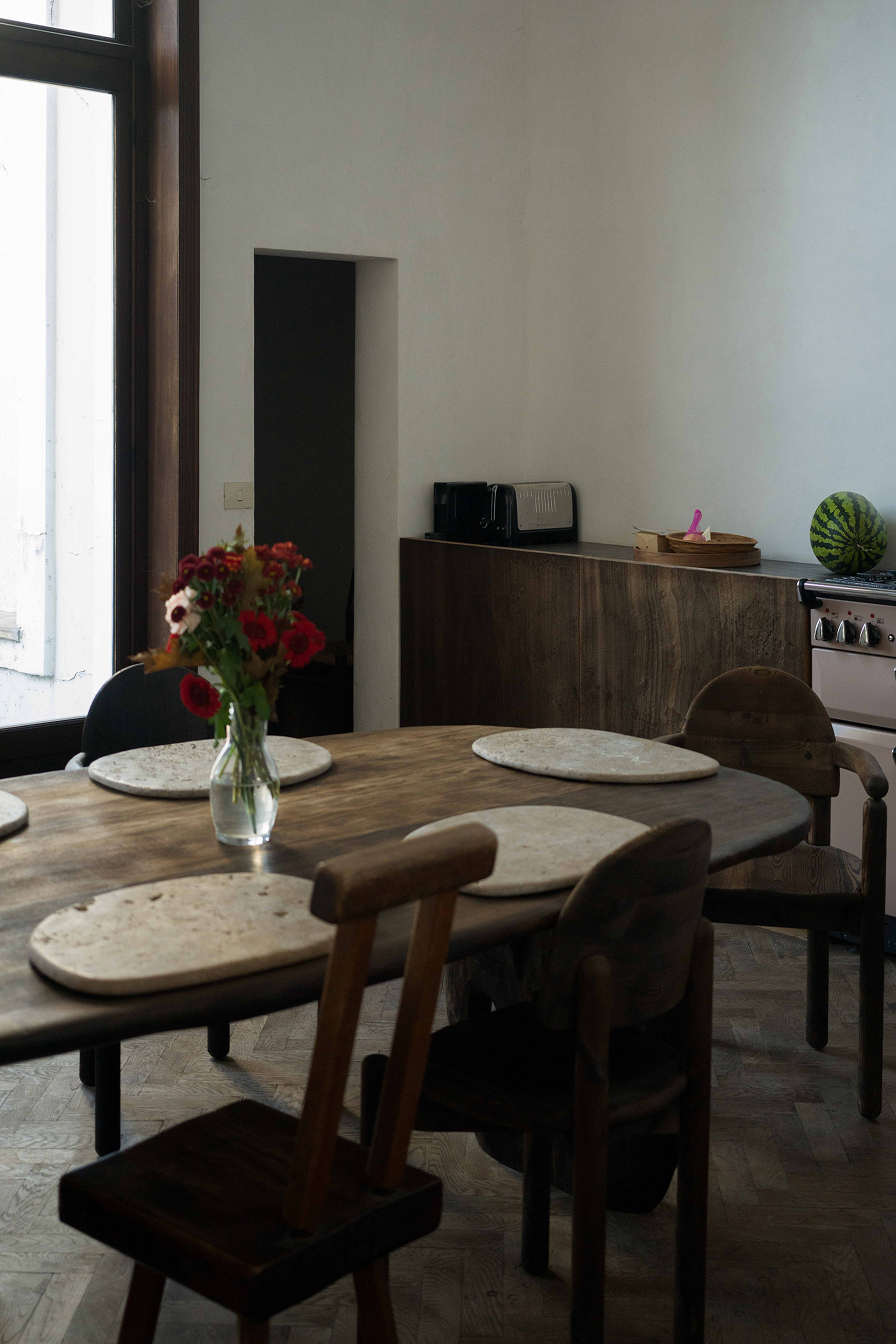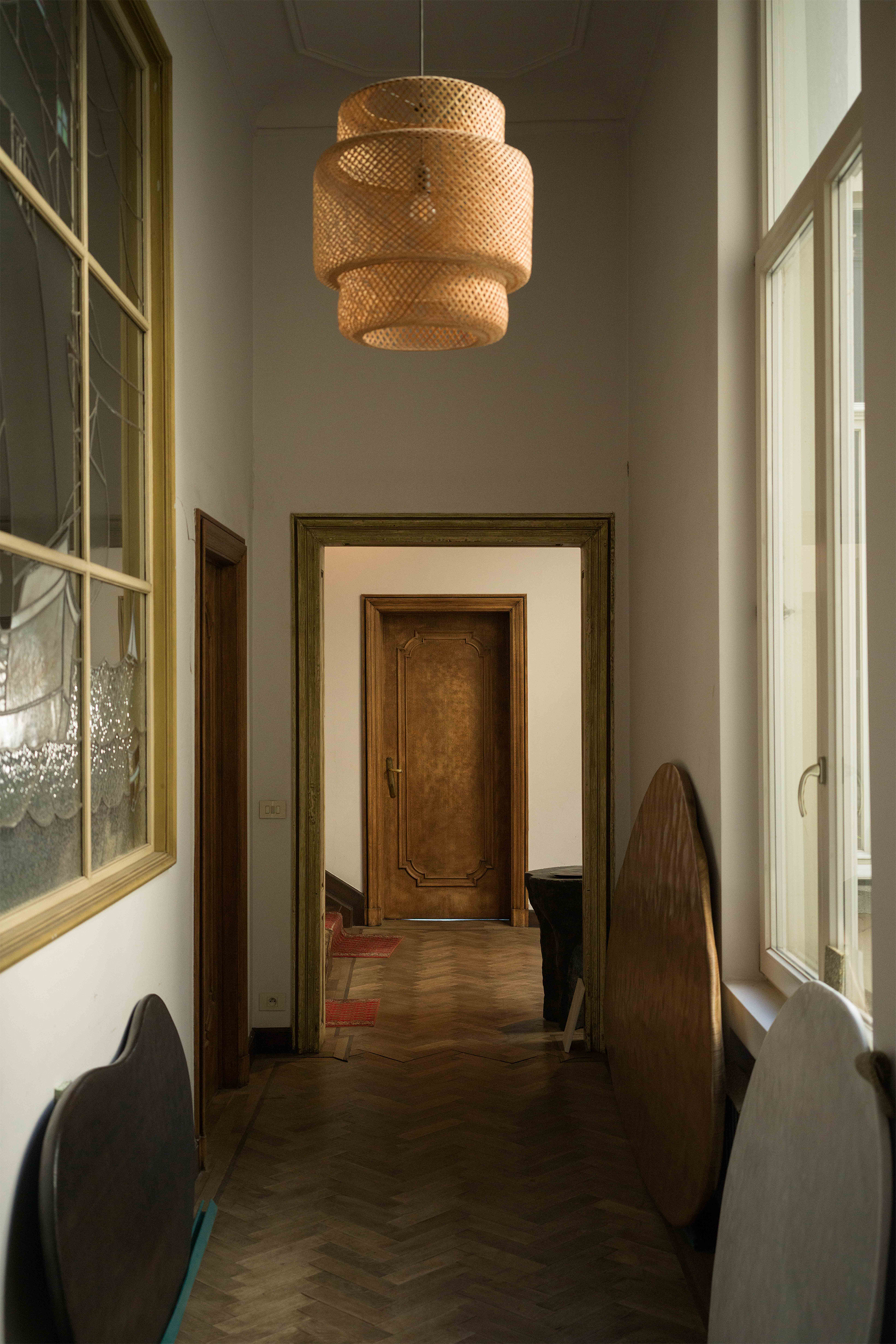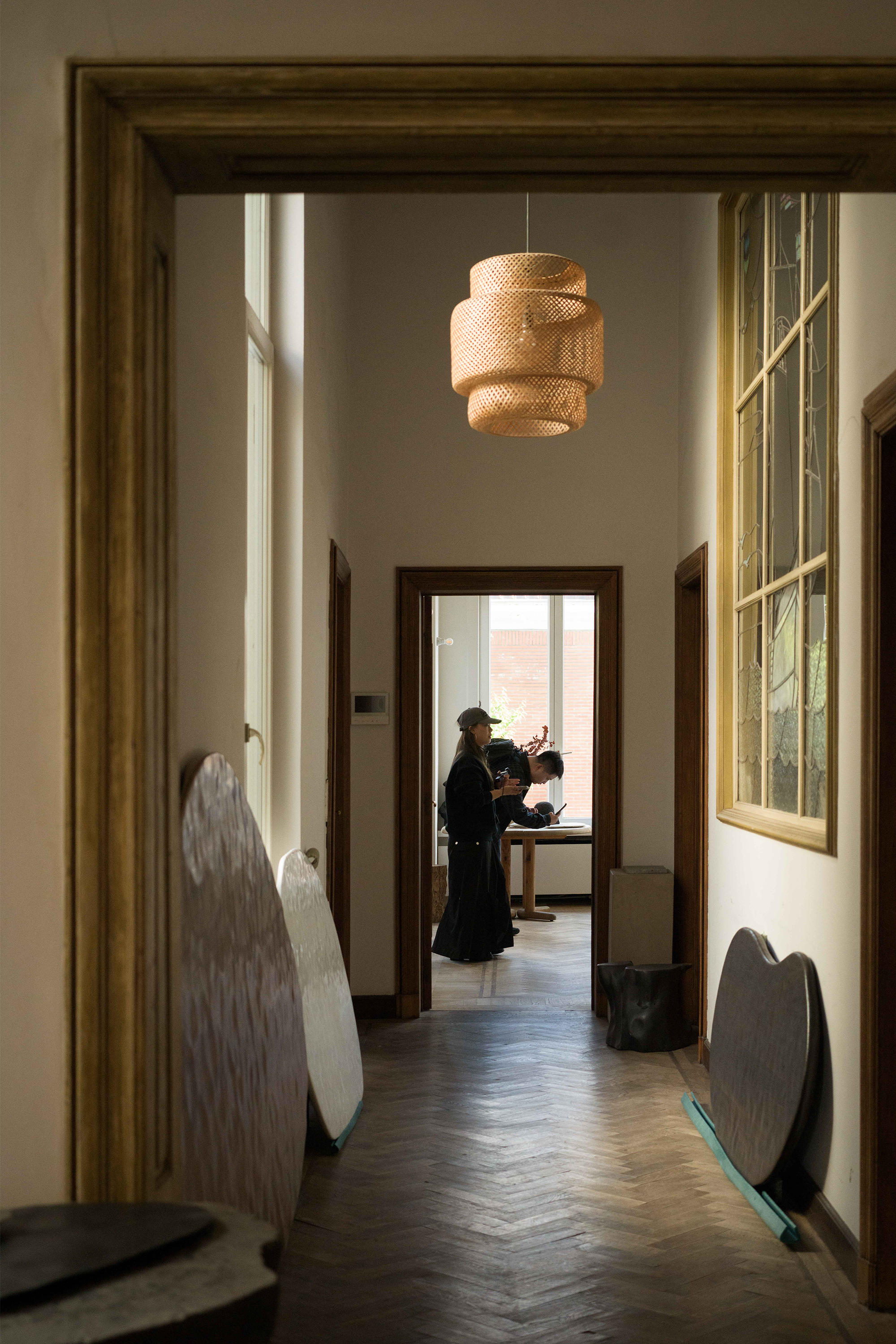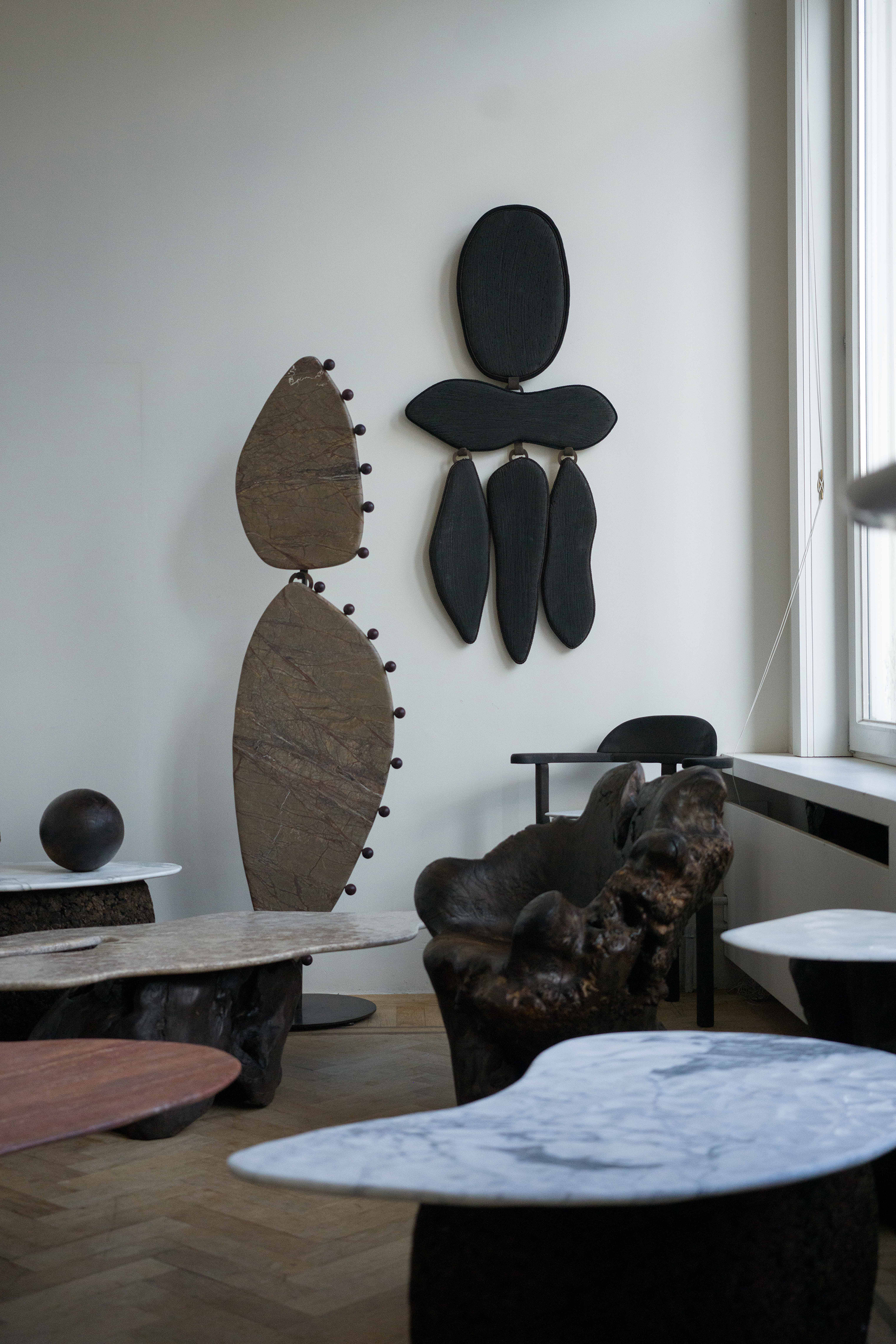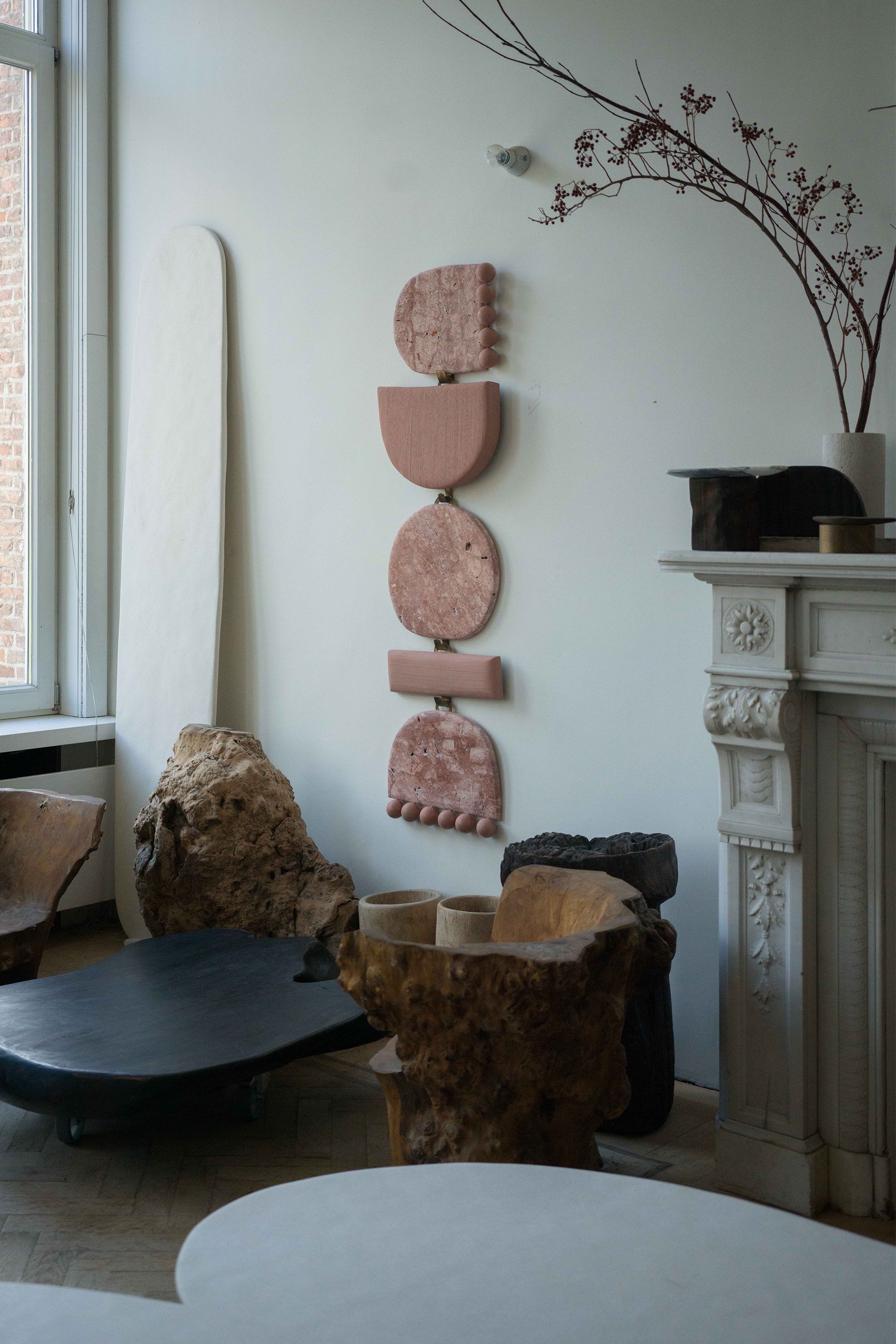In October, the autumn air grew crisp in Ghent. Under the softening light of a 4 p.m. sky, we arrived at the home and studio of Benoit Viaene. This would prove to be the most unique visit of our itinerary—Benoit greeted us at the door with a shy demeanor, offering no elaborate self-introduction nor a curated tour. His first words were spoken while pointing out the window: "That was my original studio. It burned down last November, so now I work from here." In that simple statement lay the resilience of a true practitioner. This architect, driven by boundless curiosity, has expanded his exploration into interior design, landscape design, custom furniture, and especially deep research into material craftsmanship. As we passed through the narrow hallway into his workspace, we stepped into what felt like a treasure trove of materials.
The studio was a living archive of material experiments. The long table was adorned with an array of small samples, from subtle wood grain variations to oxidized metal traces; the side cabinets were layered with test pieces documenting each exploration; the floors and walls were dotted with larger specimens, witnessing the transformation from idea to object.
Benoit picked up a plate-sized piece of transparent green glass that revealed watery textures under the fading afternoon light. "This is a sample for a tabletop," he explained earnestly. "The glass texture actually comes from charred wood. I first experiment with the wood to achieve the desired effect, then transfer it to glass through a special process."
We quietly observed other wonders in the studio: a wooden surface preserved the concentric ripples of a water drop, as if freezing a moment in time; compressed cork, once fired, displayed volcanic rock-like crackling textures; metals oxidized at different temperatures revealed gradients from bronze to deep black; most astonishing was a marble sample, its surface treated into gentle waves like a breeze brushing over water.
"I prefer using natural materials and treating them in natural ways," Benoit shared. "For instance, all the black tones come from fire, and each type of wood responds uniquely to it." These experimental samples build upon traditional craftsmanship while pushing material boundaries—some requiring up to ten processes to complete. He calls this "perfect imperfection"—meticulously treated while preserving the material's innate character.
